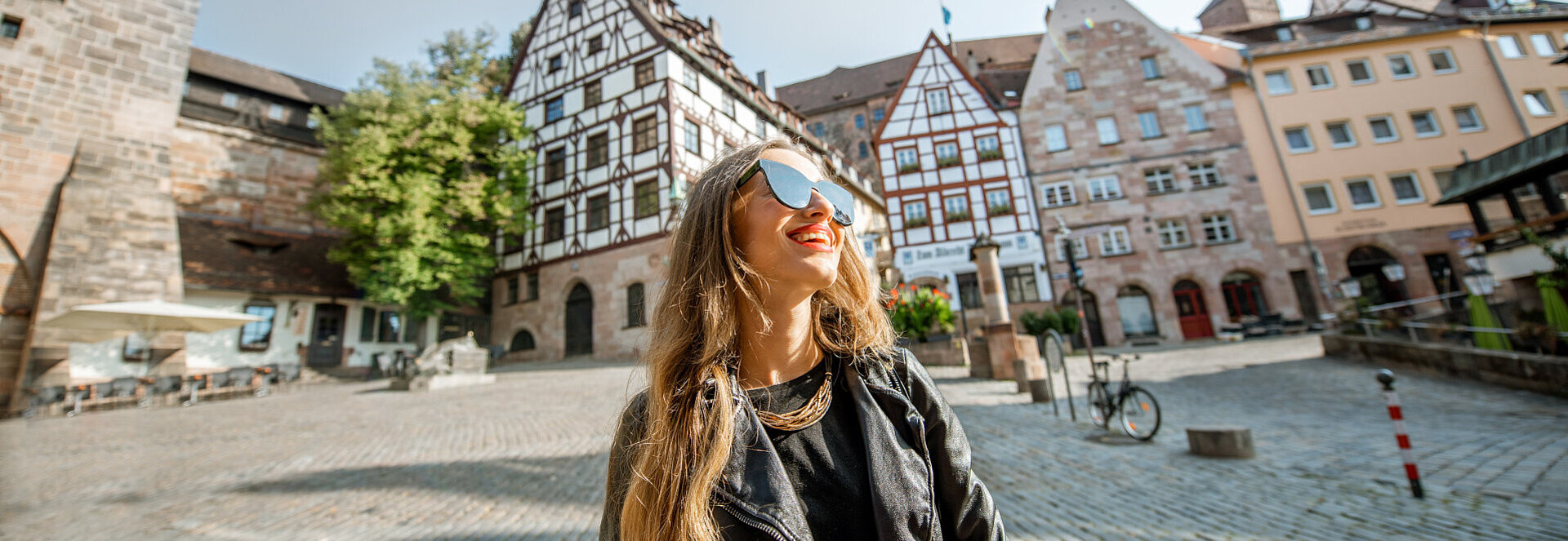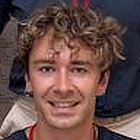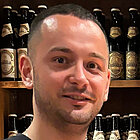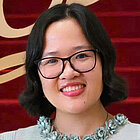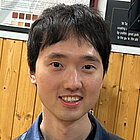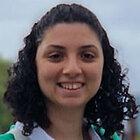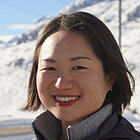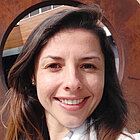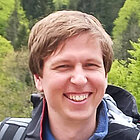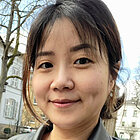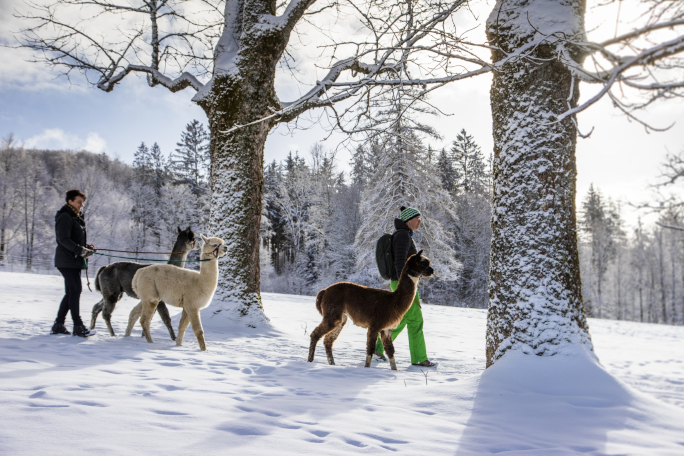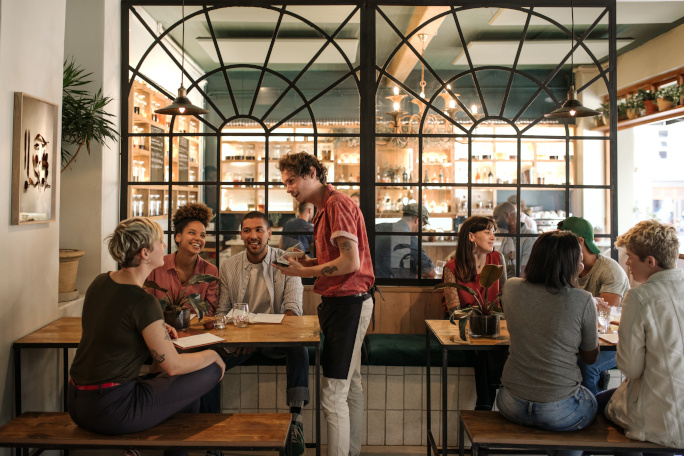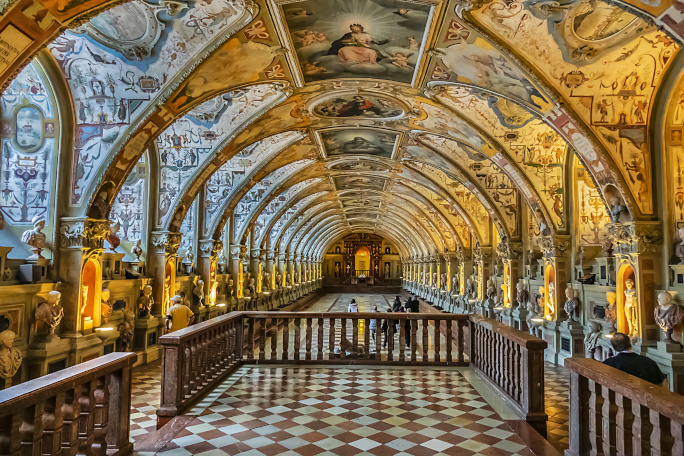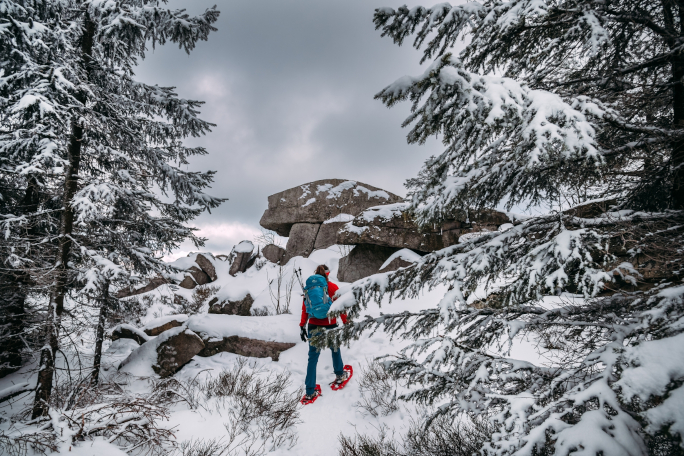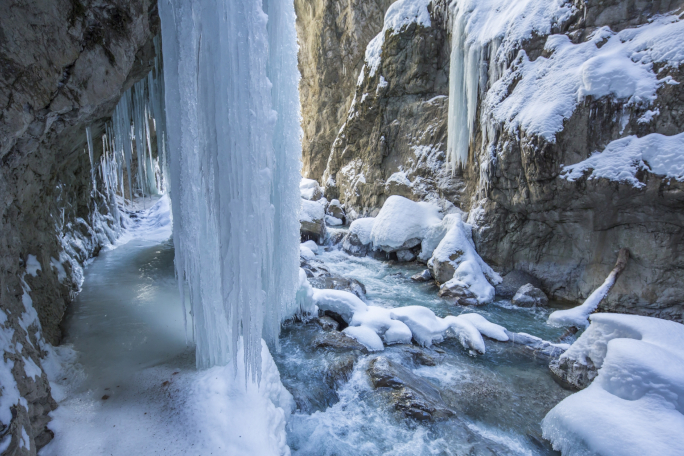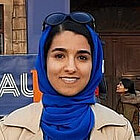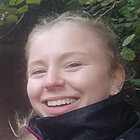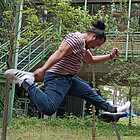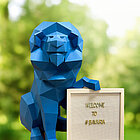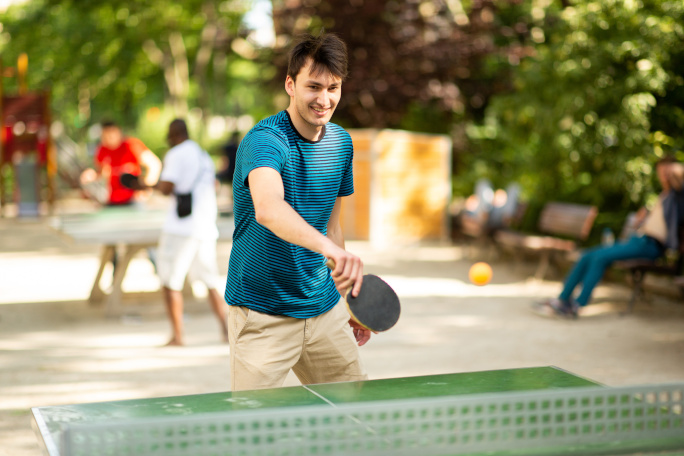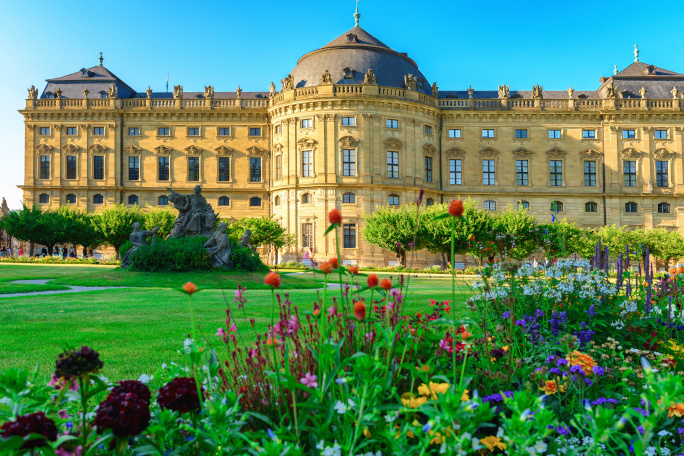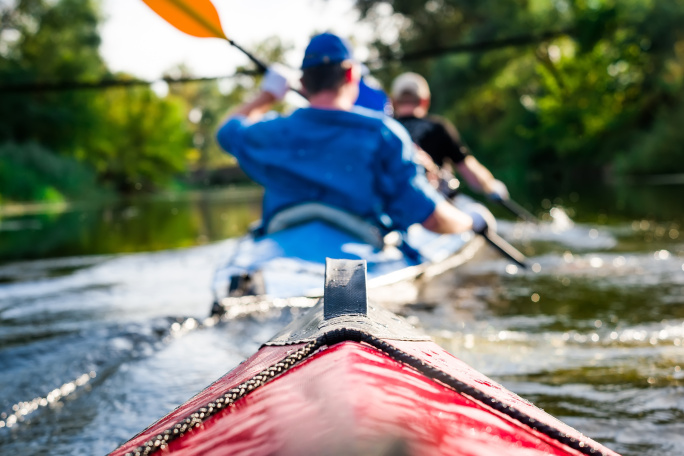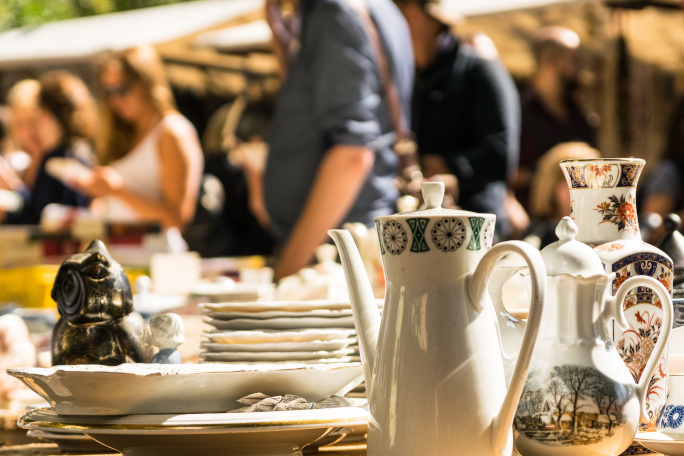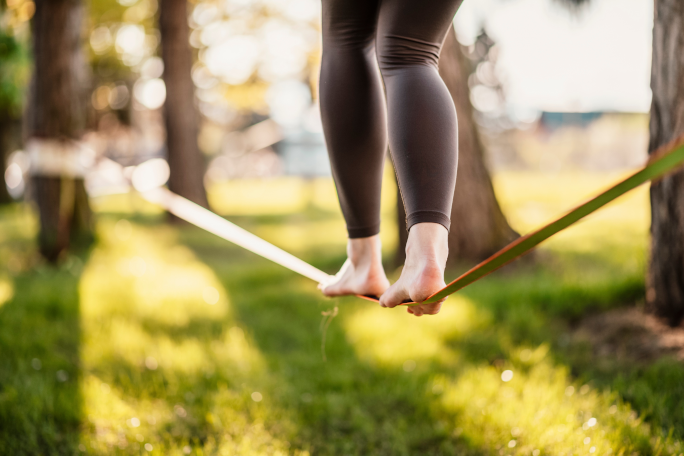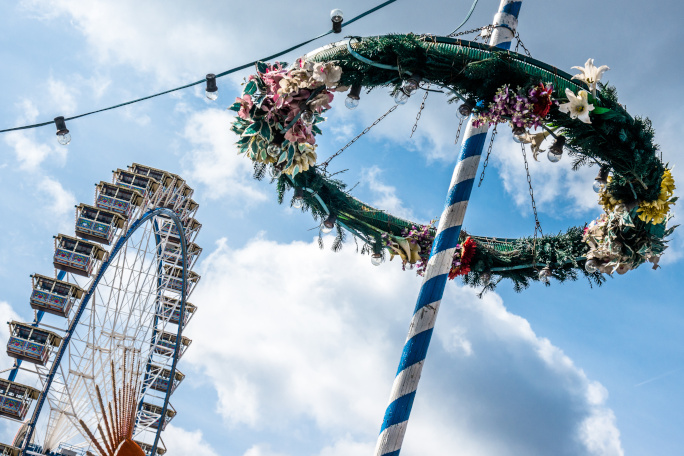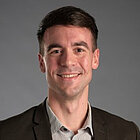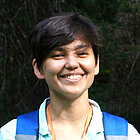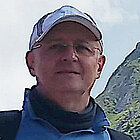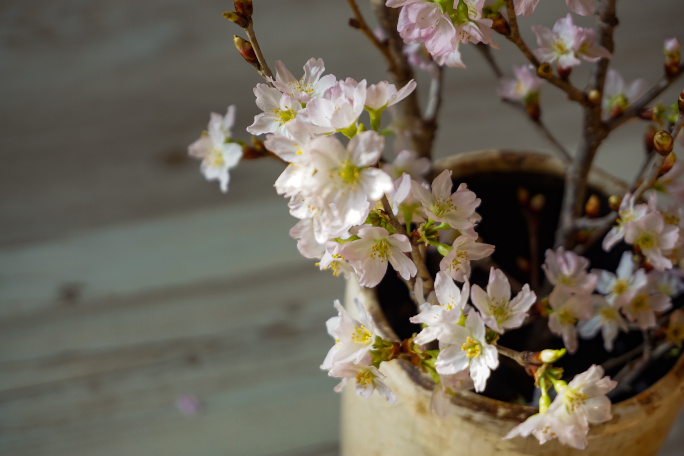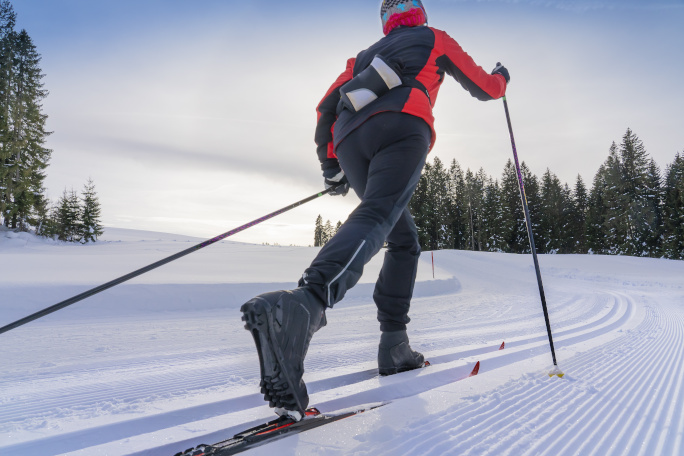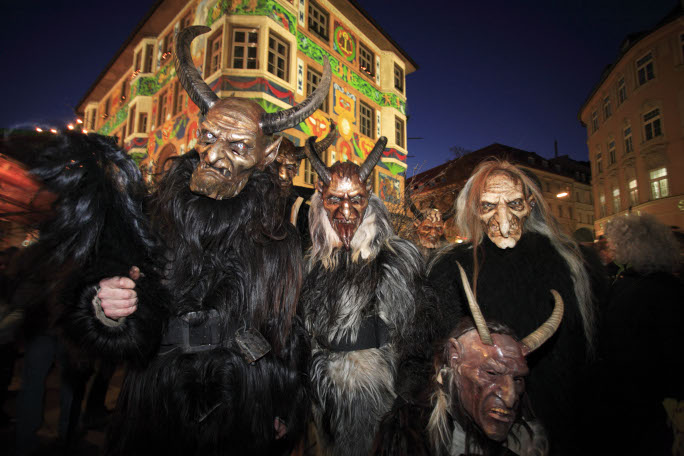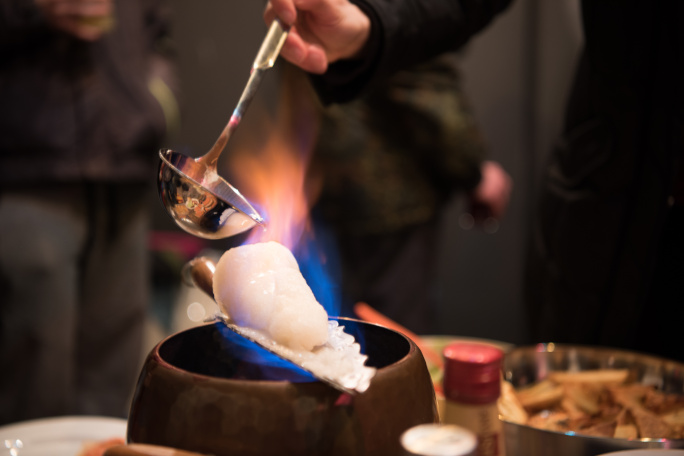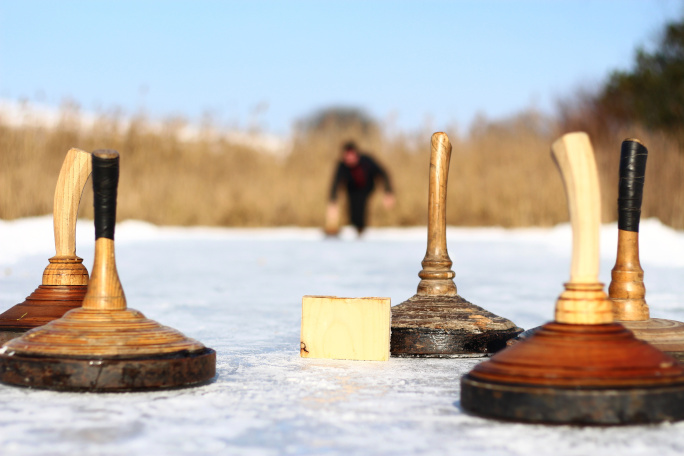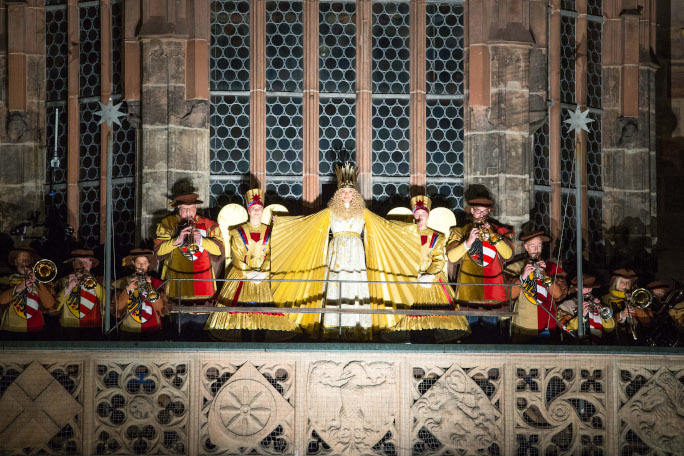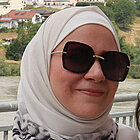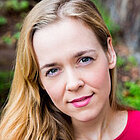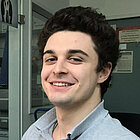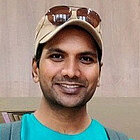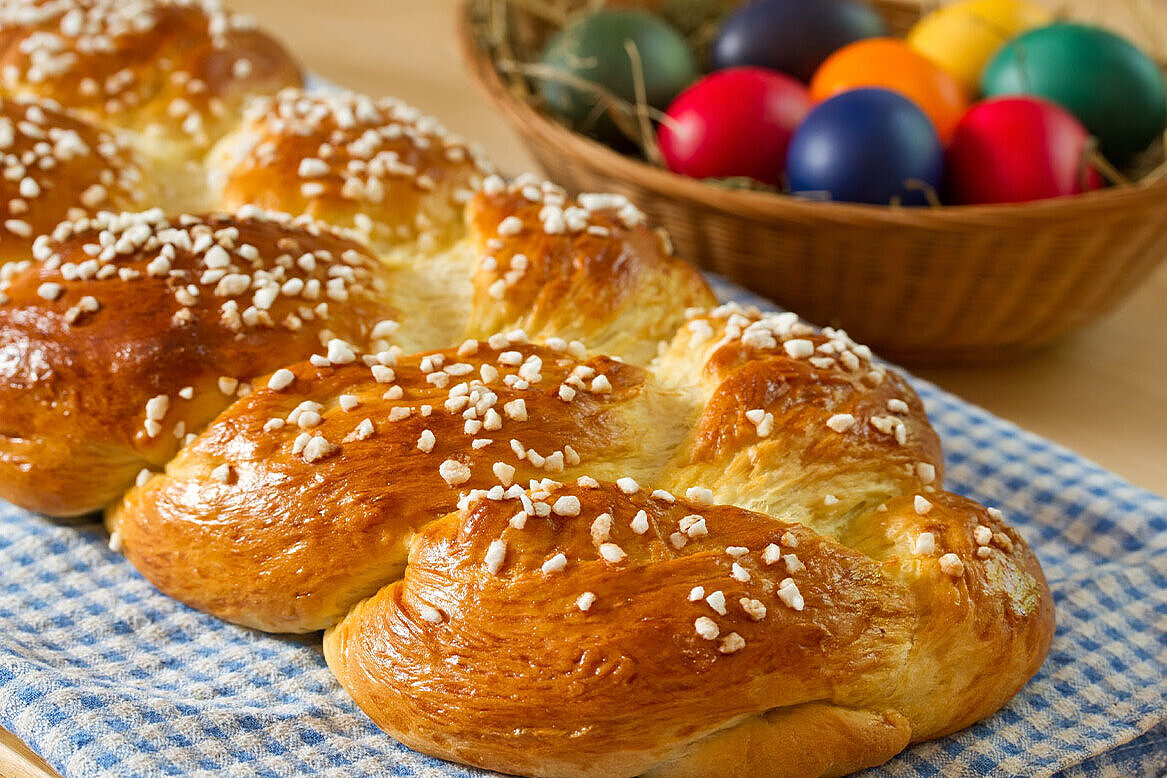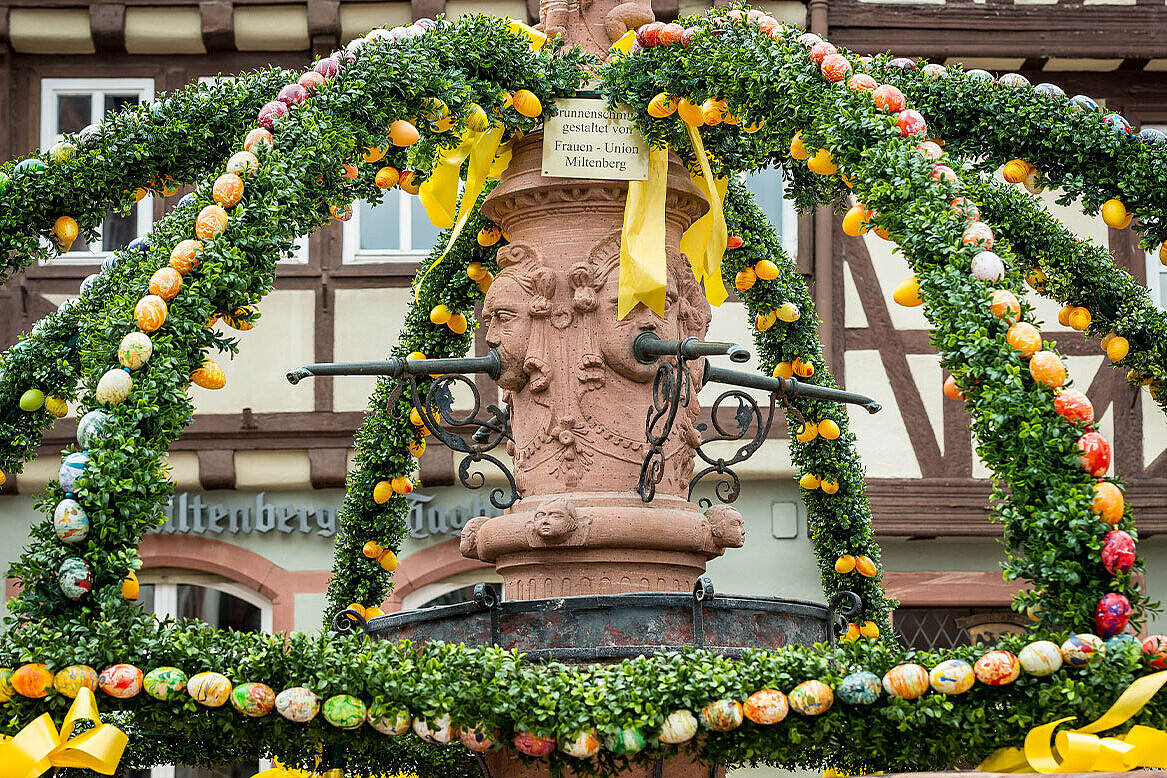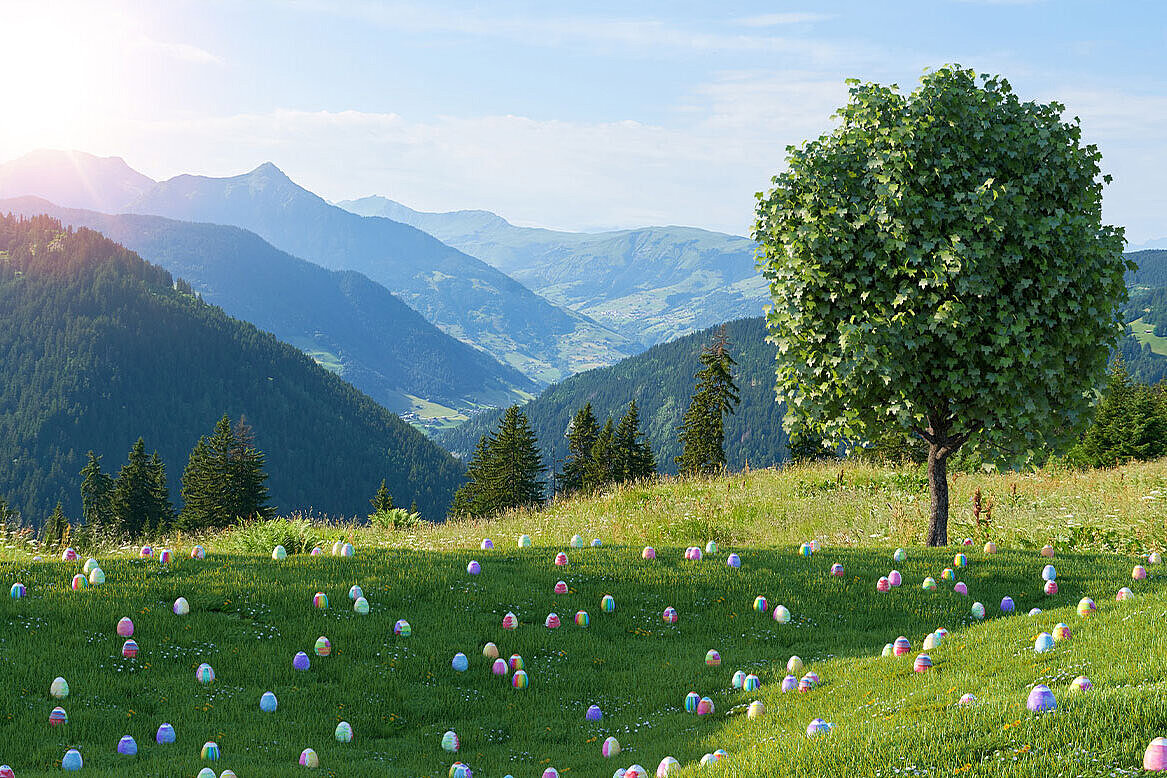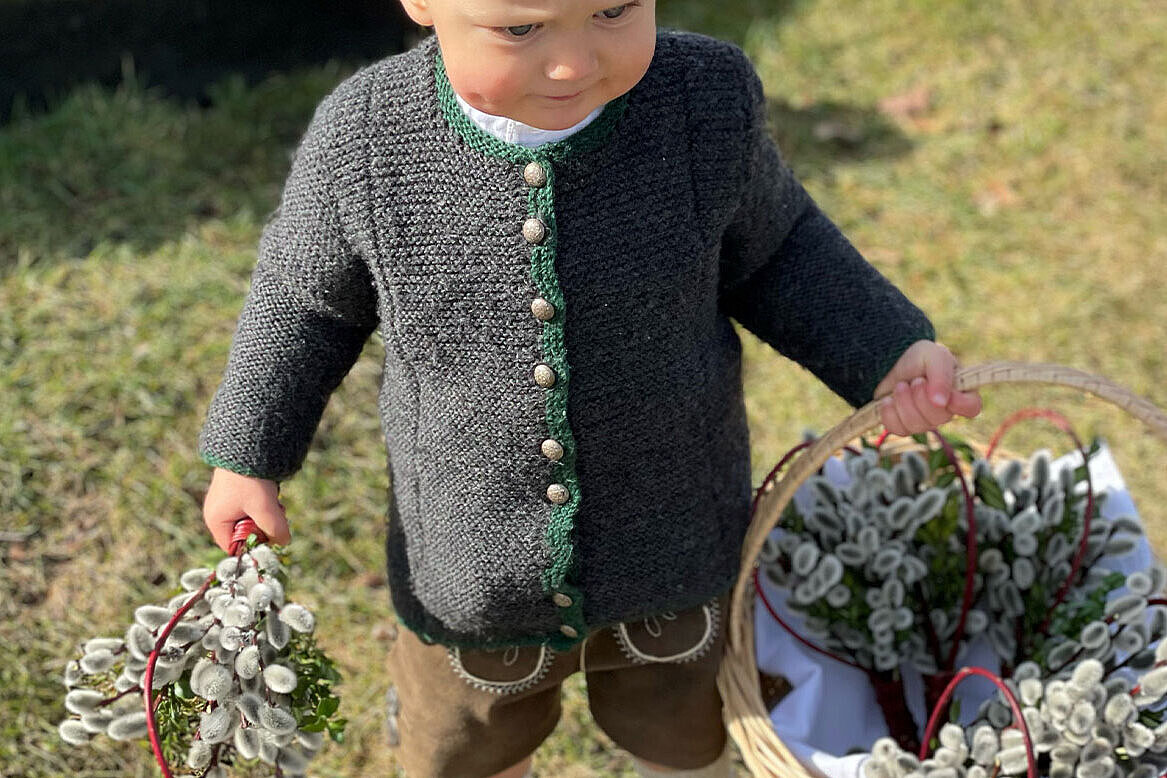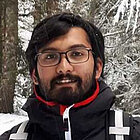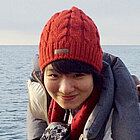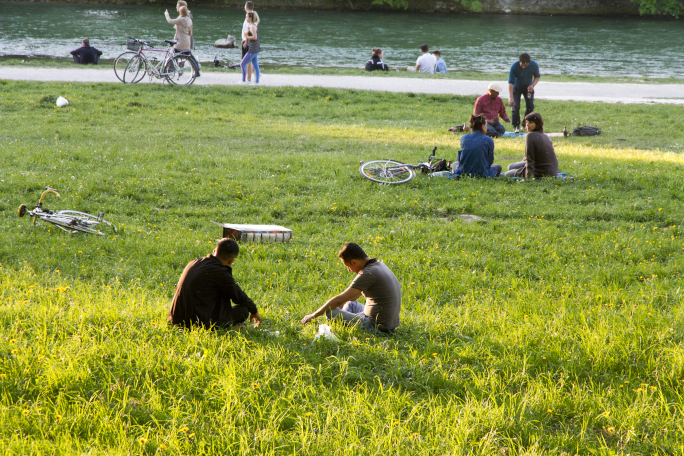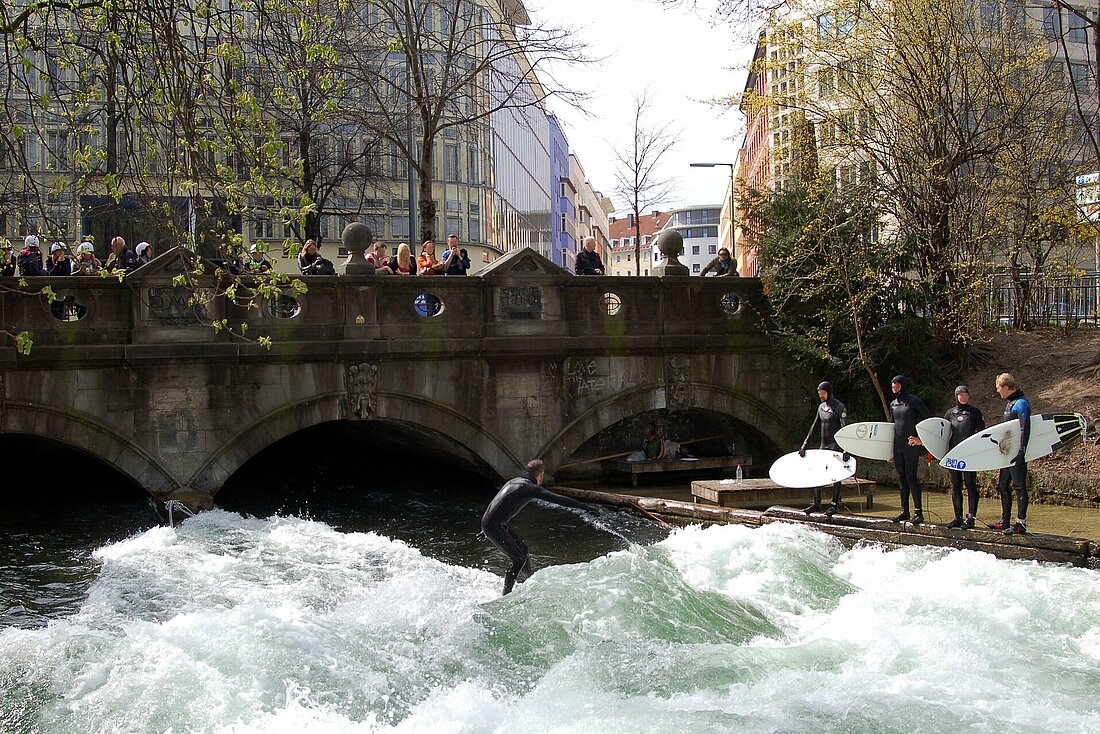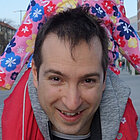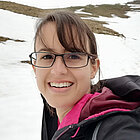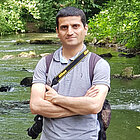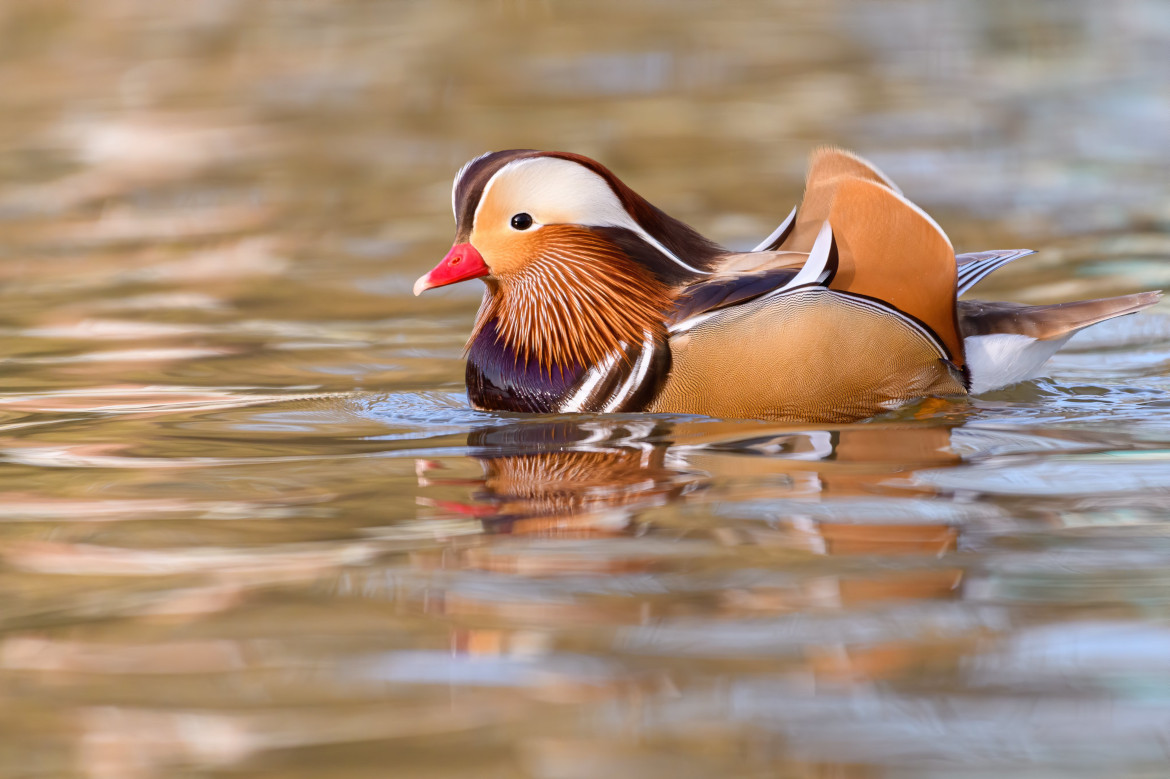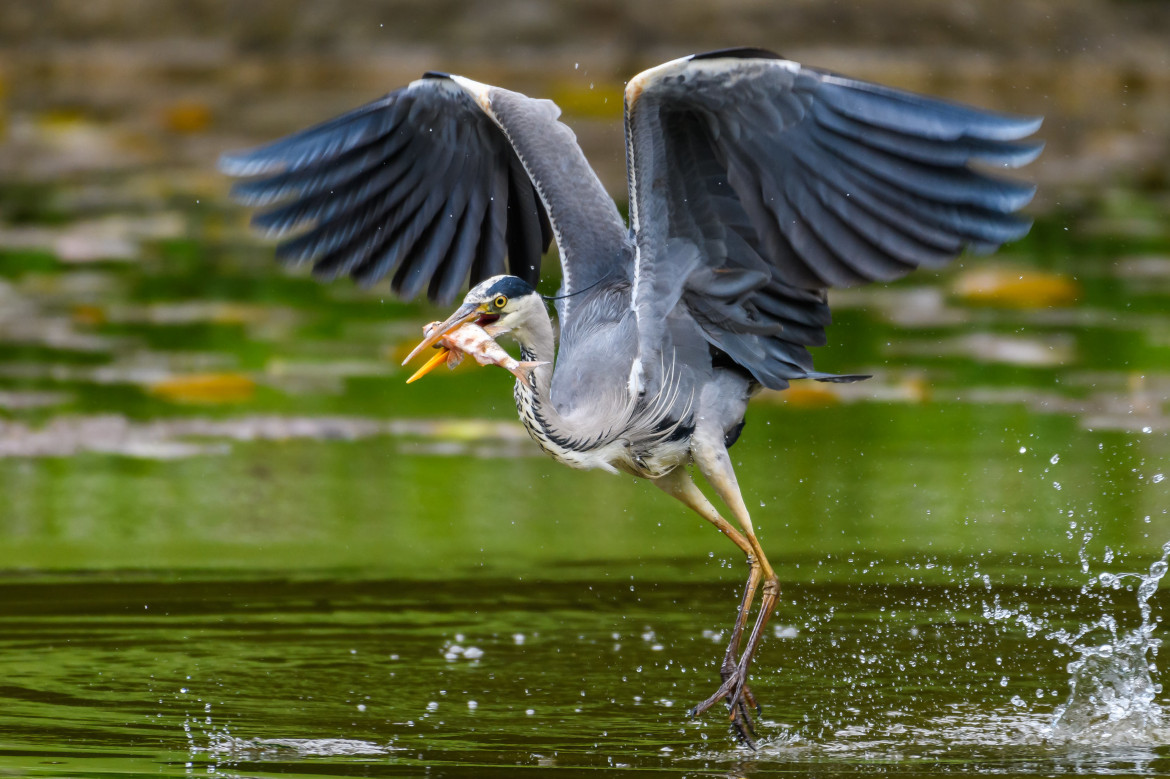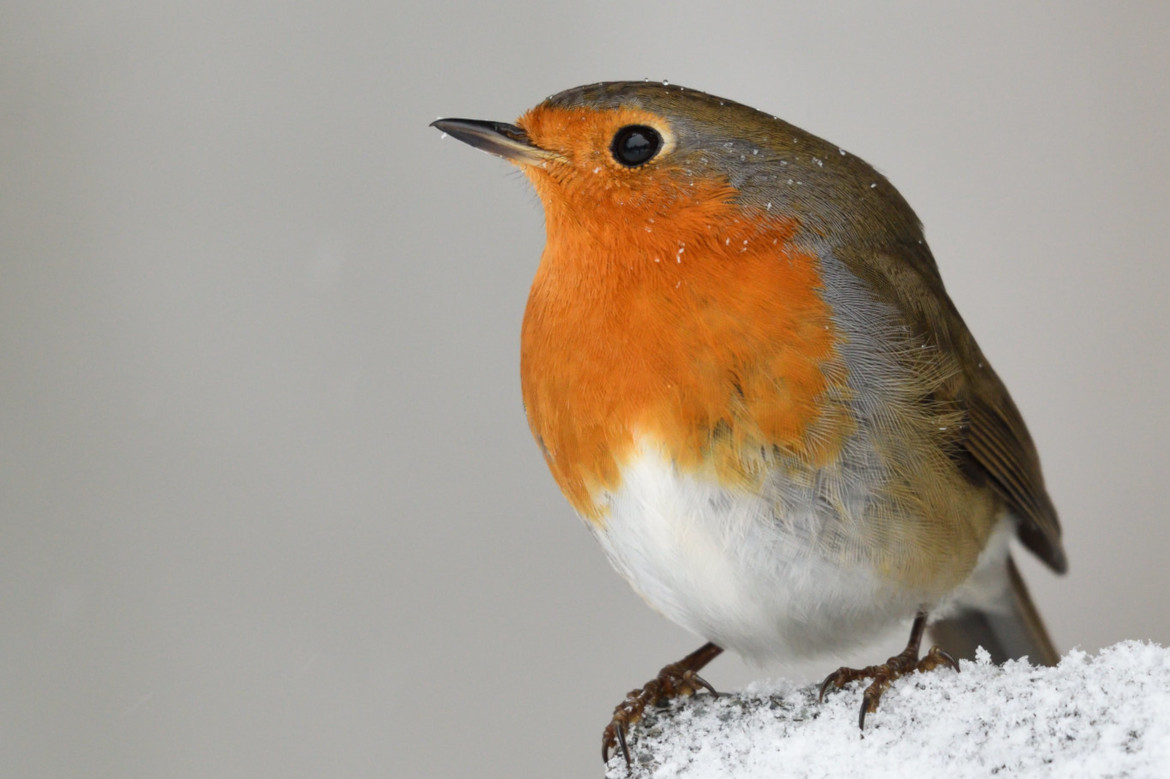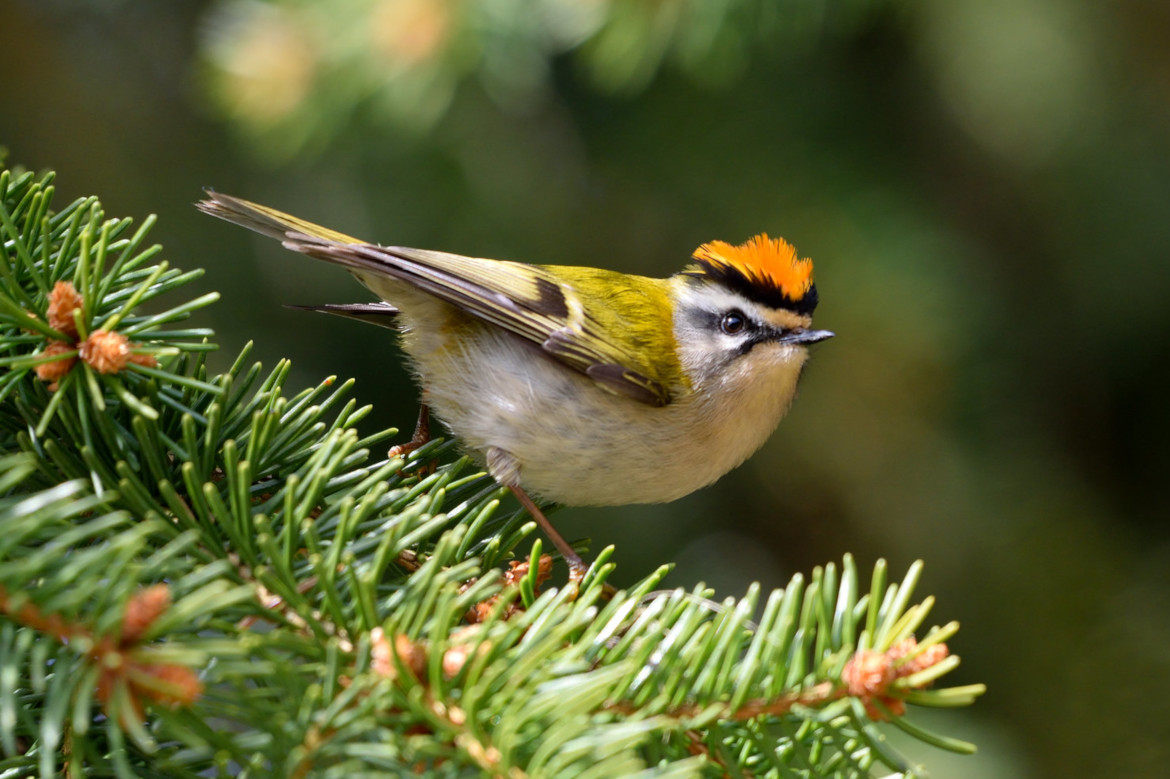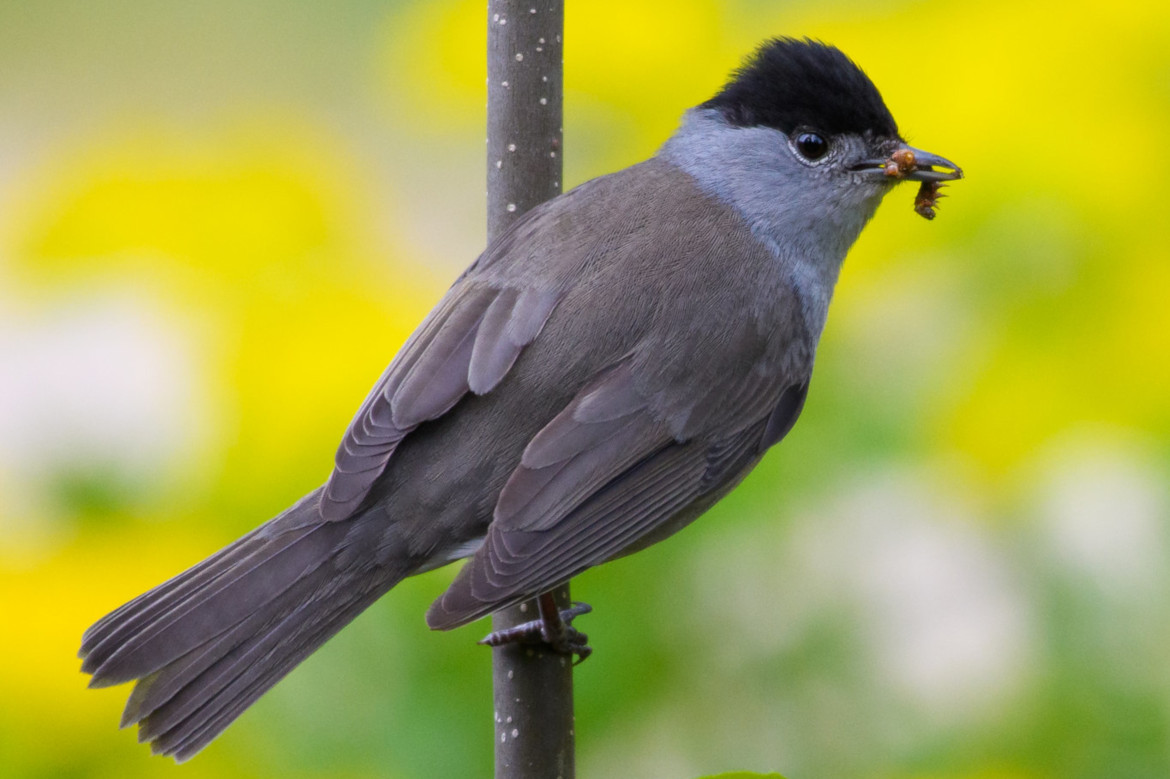Who can better tell about a place to live, its atmosphere, and must-dos for researchers than our researchers themselves? We've collected a series of stories for you and hope you feel inspired.
Sprichst du Deutsch?
German, which belongs to the Indo-European linguistic family, is often regarded as one of the most challenging languages across Europe. Understandably, this reputation might feel intimidating or even discouraging for anyone considering moving to Germany.
But here’s the good news: if you are wondering whether you can navigate life in Germany without speaking a word of German (beyond ‘Danke’ and ‘mit Karte, bitte’), the answer is YES! Of course, there are exceptions, and I can only share my personal impressions. From my experience, if you’re living in a major city like Munich or Berlin, particularly while working in research, you’ll find that English is widely spoken. This applies not only in professional settings but also in many aspects of daily life.
At the university or in the lab, almost everything happens in English. Most scientific papers are published in English anyway, and research groups are usually quite international, so it naturally becomes the common language everyone uses.
Outside of work, I’ve also found people to be very cooperative and understanding. Beyond my international friends, with whom I speak English, I really appreciate how, for example, doctors, supermarket staff, or even strangers on the U-Bahn platform often switch to English when they notice I’m struggling to understand German.
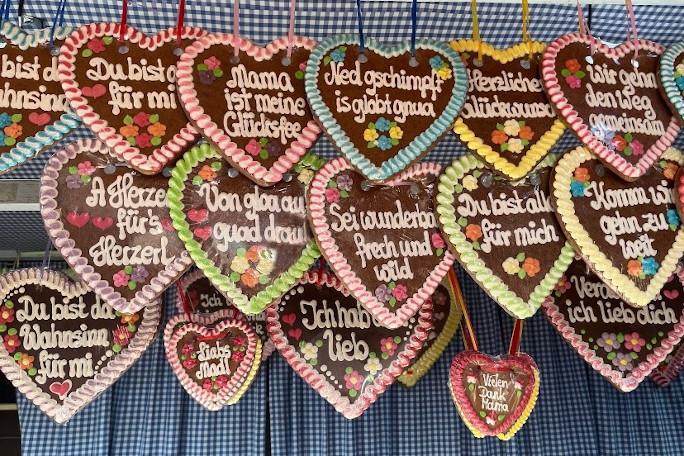
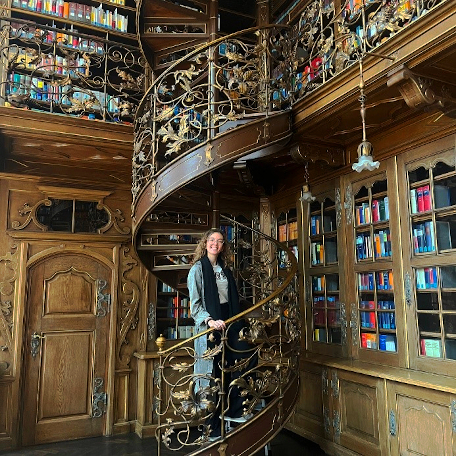
That said, speaking German is highly appreciated, even if your skills aren’t perfect or you’re unsure about grammar or declinations. German is a remarkably structured and precise language, which I find fascinating. In many ways, it mirrors German culture’s emphasis on accuracy and specificity. Additionally, German is full of unique words that are difficult to translate directly into English or Spanish, such as ‘Wanderlust’ (a passion for travel) or ‘Schadenfreude’ (taking joy in the misfortune of others).
In my case, I started learning German in 2015, about two years before moving to Munich, since it was a requirement for my master’s degree. When I finally arrived, I quickly realized that the German I had learned in class and the one people actually speak weren’t always the same, especially when it came to ‘Umgangssprache’ (everyday language or slang). To get better, I joined a few language courses and signed up for several tandem programs. Those casual conversations over coffee (or beer) helped more than any grammar exercise ever could. Little by little, I stopped translating in my head and started feeling more comfortable just speaking (mistakes and all). And that’s when it really started to feel like home.
To sum up, if you are planning to come to Bavaria for a scientific position, not speaking German should not be a dealbreaker. Most research environments are international, and you’ll be able to get by in English just fine at first. Still, I’d strongly recommend making the effort to learn the language. Universities frequently offer German courses (as I experienced at the Technical University of Munich), and there are also plenty of options through institutions like the Volkshochschule and private language schools.
Learning German is absolutely worth it. It doesn’t just make everyday life easier, it helps you connect more deeply with the people and the culture of the place we are calling home.
The Samba Vibe
Moving from the busy streets of Mumbai, India to very quiet and peaceful Coburg in 2021 was a leap bigger than I had expected, but I will always remember it as it made me stronger. Being raised in one of the world’s most populated cities, I was accustomed to the constant sounds of people, celebrating together, helping each other, and filling every corner with life.
Coburg, by contrast, felt almost unreal in its quiet. Arriving in this small Bavarian town with a population of just 40,000 people to begin my PhD was a big culture shock. I missed the crowds on the trains, on the sidewalks, and the feeling of people being around me.
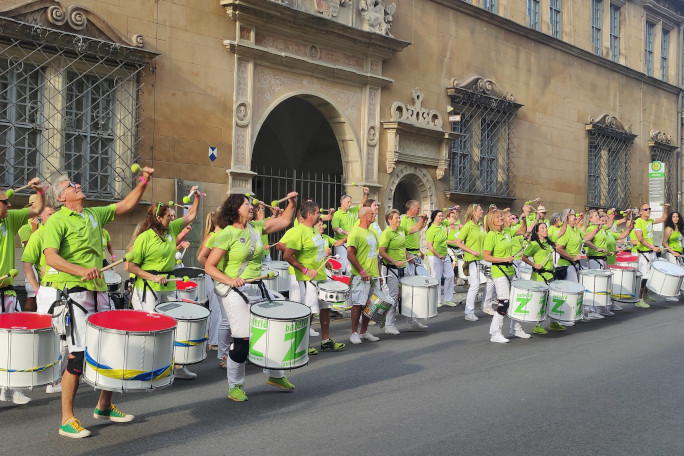
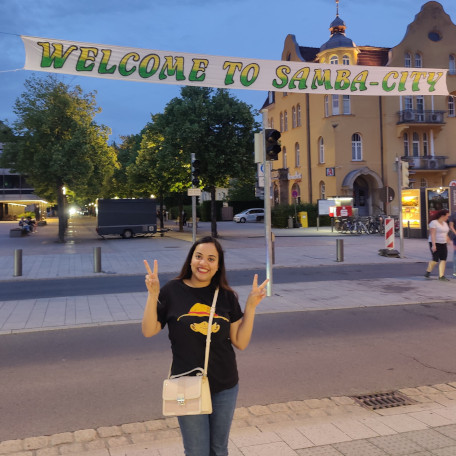
Half a year later, after some months of trying to adjust to Coburg, my first Samba Festival weekend felt like a burst of home. Drums thumped through the old town, dancers in feathered costumes wound their way past Schlossplatz, and every corner overflowed with joy, just like Mumbai’s festivals. Coburg’s International Samba Festival has been bringing a pinch of Brazil to Bavaria every second weekend in July. What began as a small event, has grown into Europe’s biggest samba gathering outside Brazil! An event full of life and joy!
Now, four years on, I’ve come to enjoy Coburg’s slower pace. My mornings start with birdsong and a beautiful view of “Veste Coburg” (Coburg Castle), which gives me the focus I need for my PhD. Yet each July, the Samba Festival reconnects me with my home city, turning this quiet town into a loud but joyful scene, reminding me of home.
A Unique Opportunity
When I came from France to Munich as an exchange student in 2020, I didn’t know much about Germany or Bavaria. During the last year of my Master’s at Ludwig-Maximillians-Universität München (LMU) and the Technical University of Munich (TUM), I fell in love with the Munich way of life and the Bavarian landscape. Therefore, to the great distress of my family in Brittany, I decided to stay here and start my life as a PhD student.
Being part of a large research group at TUM offered me so many opportunities and life experiences. Representing the TUM Physics Department in the Bavarian SolTech collaboration as a member of the student board was one of them, and made me develop new friendships all over Bavaria. I was honored to represent SolTech at the 74th Lindau Nobel Laureate Meeting in summer 2025 and showcase scientific advances in solar technologies. It was nice to observe attendees feeling the strong group cohesion we have in SolTech, and I think, we inspired other participants to give Bavaria a try in the future.
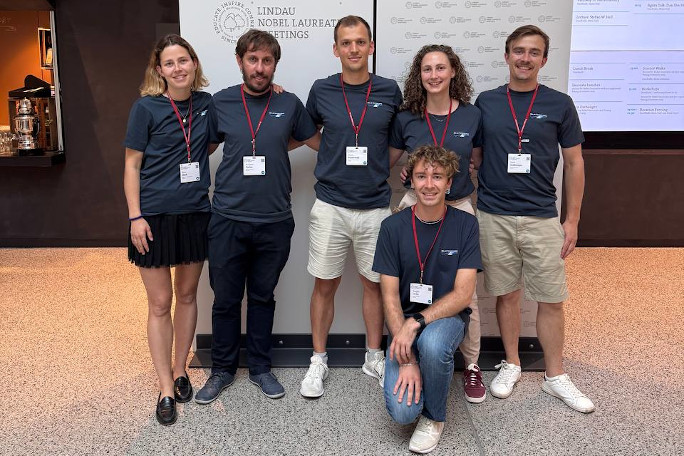
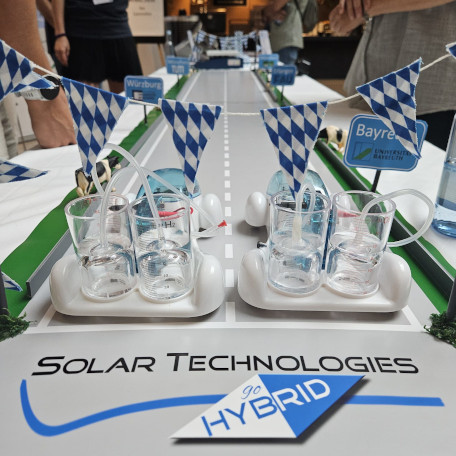
The Nobel Laureate meeting is also a place to exchange ideas and network with great scientists from all around the world. For me, it was very inspiring to speak with Nobel Laureates and, I felt very lucky to have spent these days at Lake Constance with my fellow SolTech members.
Looking back, I realized that after all, it had been my year as an exchange student in Munich that had set the wheels in motion. My new life here has brought me more than I could have ever imagined.
From Wine to Beer
When I first planned my move from North Macedonia to Germany for my studies, I had two clear expectations: punctuality and beer! My journey began in the beautiful Franconian city of Würzburg, where I completed both my bachelor’s and master’s degrees. It didn’t take long to learn that punctuality in Germany means arriving five minutes early—not just on time. But what about beer? That expectation had to wait, as I quickly realized that, just as North Macedonia, Würzburg is a wine region.
After finishing my studies, I started my PhD at the University of Augsburg. I was pleasantly surprised by how well-organized everything was for newcomers. The Welcome Service reached out to me directly, and I was able to join several events for international researchers. These events were a great opportunity not only to learn more about German culture, but also to meet other international researchers and make new connections.
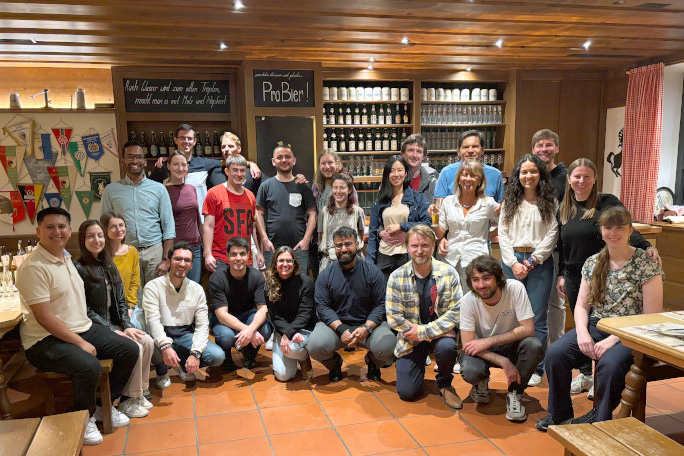
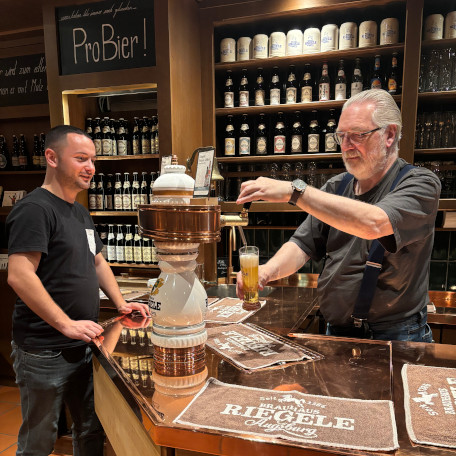
One such event was a visit to the Riegele Brewery—and there it was: Bavarian beer! Our host enthusiastically explained how their beer is brewed using local grains and Augsburg’s own water sources. We were all amazed to learn about the “Reinheitsgebot”, the German beer purity law, which states that beer may only be brewed from water, malt, hops, and yeast. Another fun thing we learned was that in ancient times and the Middle Ages, beer was actually used as a form of medicine.
After exploring the brewing process, we gathered in a cozy “Wirtshaus” (pub), where we had the chance to taste a variety of beers brewed on-site. The atmosphere was relaxed, friendly, and—true to the Bavarian spirit—full of good conversation. Let’s agree: beer brings people together 😊
Getting to know this part of German culture really rounded off my Bavarian experience. If you’re new here, visiting a brewery is a fun way to learn, meet people, and appreciate local traditions.
Dual Horizons
The ceremony on Thursday, October 31, 2024, at the Troisdorf City Hall was nothing short of magical. As we stood together in the grand hall, I felt my heart race. The atmosphere was formal yet warm, with officials in crisp suits greeting new citizens by name. When the national anthem of Germany began, I joined in for the very first time, my voice trembling with pride as I realised how far I had come.
When my name was called, I stepped forward and shook hands with the mayor, accepting my certificate of naturalization with a beaming smile. Years of dedication culminated in that crisp document: a testament to my integration and perseverance. Eligible three years earlier, I had postponed my application, because back then, I would have had to renounce my Vietnamese citizenship. When Germany’s dual-citizenship law took effect at the end of June 2024, I submitted my full application in early August—and by late September, my certificate was already signed dated.
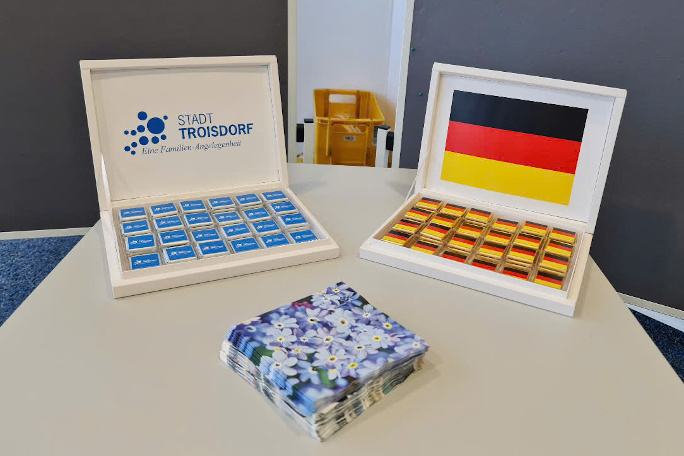
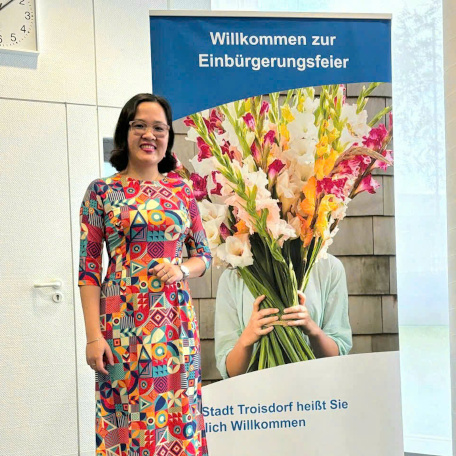
In my case, becoming a German citizen required five years of legal residency, a permanent residence permit, B1-level German skills (I already held B2), and successfully passing an Einbürgerungstest (naturalization exam) with at least 17/33 correct answers (I got the maximum score). Preparing for the test was a joy: I devoured facts about German history, law, and society, and practised mock exams until I felt ready.
Fully funded by DAAD, my journey in Germany had begun in 2012 as a Master student in Development Management at Ruhr-University Bochum. After four years back in Vietnam, I returned in 2018 to work for an NGO in Bonn. In 2021, I embarked on my PhD at FAU Erlangen-Nürnberg, fully funded by the Elite Network of Bavaria, where I found—despite not living in Bavaria myself—both academic inspiration and a true sense of home.
To fellow international researchers, who share my dream, I would like to offer the following advice: Believe in your journeys! Hold on to your roots, embrace new traditions, and trust that with perseverance, your own horizon will expand.
From Japan to Bavaria
In 2022, I packed my bags and left my home in Japan, the country where I was born and raised, to begin a new academic chapter in Munich—first as a Master’s student in Neuroengineering, and now as a PhD researcher. Munich’s global reputation as a neuroscience hub was a big draw, and it hasn’t disappointed me.
What I appreciate the most about doing a PhD here is the balance between work and life. Of course, you are supposed to work as independently as possible and get your job done on time, but there’s a strong culture of trust: no one expects you to sit in the lab until your supervisor goes home—I guess, most students from eastern Asia have more or less experienced that... Instead, there’s room to breathe, and enjoy your free time as well.


This is why outside the lab, life in Bavaria is just as rewarding. Under my current work contract, I am entitled to 30 days of paid vacation each year to do whatever I please! So, to get my mind off my demanding, but equally rewarding research activities, I’ve had time to play the guitar and breathe fresh air by exploring the stunning landscapes around me during activities ranging from weekend hikes in the Alps to spontaneous trips across Europe. In addition, my colleagues are more than just coworkers—we’ve celebrated birthdays, shared meals, and made memories together.
Bavaria has become much more than just my workplace—it’s my home now, my community, and a place where research and real life blend beautifully.
A Journey of Firsts
As an international who didn’t grow up in Germany, I often feel like I lack the basic skills that everyone around me seems to have mastered. Well, that is one way to look at it. I view it as a chance to experience things for the first time, while others take them for granted. One of my recent firsts was ice skating. Coming from a warm country, ice skating is not really popular in Egypt. At first, I was hesitant—honestly, I was scared, knowing that balance and grace aren’t my strengths. My friends, however, were locked on making me try it and they were not taking no for an answer. So I went, and there I was, a 27-year-old clinging to dear life, and a penguin for two hours. It was terrifying, but it was also so much fun, much more than I had expected.


A month later, I was visiting a friend in another warm country, and when we found a nearby ice rink, I suggested, we try it together. She loved it. We grew up together, yet this was a brand-new experience for both of us.
So, if you’re wondering what life will be like when you move to Bavaria, I can tell you—you’ll often find yourself in daunting situations, but you’ll enjoy them more than you’d expect. And when you visit home, you will even carry some of those experiences with you to share with friends.
Echoes of Justice
As a Brit coming to Germany, specifically Nuremberg, for the first time, I’ve got to say my main association with the city was twofold: firstly, the Nazi rallies before World War II, secondly the war crimes trials after the war, where the leading surviving Nazis were put on trial. These are perhaps not the most comforting things to know about your new home—fear not, Nuremberg is, it turns out, quite a nice city these days.
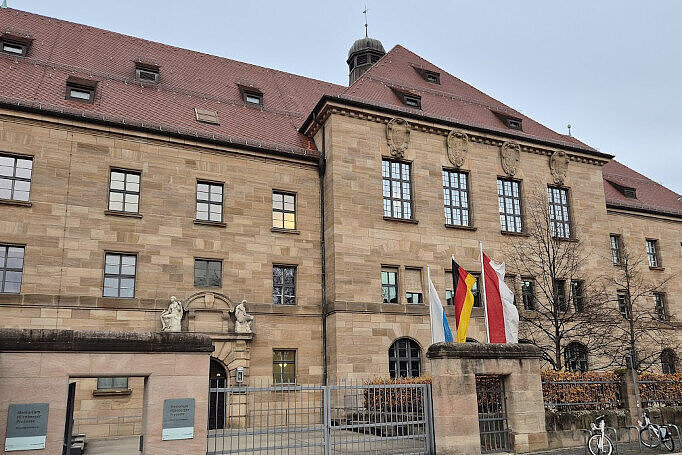
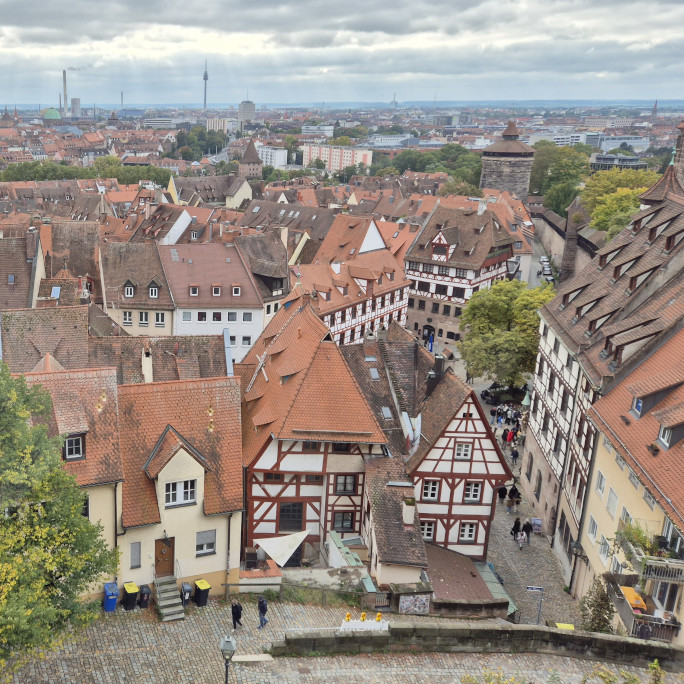
Consequently, despite my own interests lying generally a bit farther back in history, one of the first sites I visited in the city was the memorial to the Nuremberg Trials. This is housed in the courthouse where the trials were held, located a bit west of the town center. And it is a rather sobering visit, not least when one enters the actual court room where the main sessions were held. The museum is very detailed and takes you through the whole trial process, from the organization to the aftermath, and then on to the modern legacy. Particularly interesting, I found, was the section about the conflicts between the Anglo-American and Continental legal systems that nearly derailed the whole prosecution. All in all, a very worthwhile visit, and a salutary reminder in these troubled times that justice, eventually, tends to catch up with even the maddest and baddest.
PingPang Talk
“Welcome to PingPang-Talk, where we see our everyday surroundings through different eyes…”
Since February 2023, I have been hosting the bilingual PingPang-Talk podcast, which was started by the Bavarian International University Center BayChina to share intercultural experiences. As host of the podcast, I regularly meet interesting guests and talk to them about their specific cross-cultural experiences such as the following: the story of Xiaolong, who graduated during the pandemic and eventually found a job in Germany; Sabrina’s story of volunteering to help the elderly learn to use smartphones during her exchange stay in China; the insights of The Critic, an exciting student band from Erlangen, on live shows...

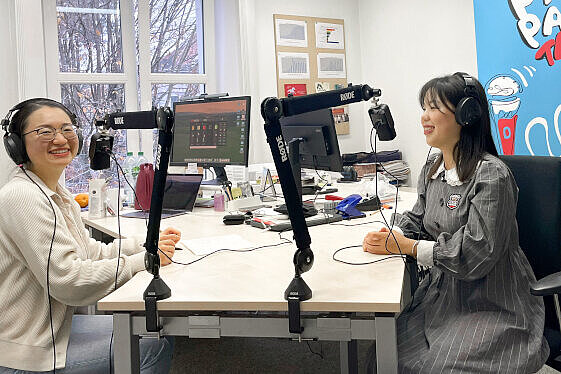
When I talk to my guests about why they chose to come to Germany and to Bavaria, everyone has their own answers. Although for different reasons, we all chose the same destination to make different experiences in our lives and turn them into stories. In these stories, cross-culture is not just about a certain moment, a communication skill or a particular concept. Cross-culture is a part of our everyday life in Germany. It's the aroma of lye bread when landing at a German airport; it's complaining about and making fun of a delayed train together with people from different countries; it's getting used to greeting each other with "Servus"; it's also telling jokes that may not always hit the mark with each other's sense of humor. Experiencing cross-culture has made me understand the individual experiences behind every opinion and point of view. Through the podcast, we share and record our cross-cultural daily experiences, so that we can listen to and accompany each other by telling these stories.
If you have interesting topics, want to share personal cross-cultural stories, or have specific guests you'd like to hear on PingPang-Talk, please write to us at: podcast(at)baychina.de. We are looking forward to hearing from you!
Erlanger Bergkirchweih
The Bergkirchweih is one of the oldest German beer festivals, held in the city of Erlangen at the end of May, or the beginning of July and starts on the Thursday before Pentecost. It has taken place since 1755 in the mountains of Erlangen, where people used to build cellars to store and cool beer in former times. The opening ceremony of the festival called “Anstich” is carried out every year at a different beer cellar. When the first barrel is opened by the city’s mayor, thousands gather around, hoping to receive a free sip of beer. The festival is visible from far away due to a huge Ferris wheel that is in operation day and night. On 12 consecutive days, there is plenty of fun and entertainment for everyone.
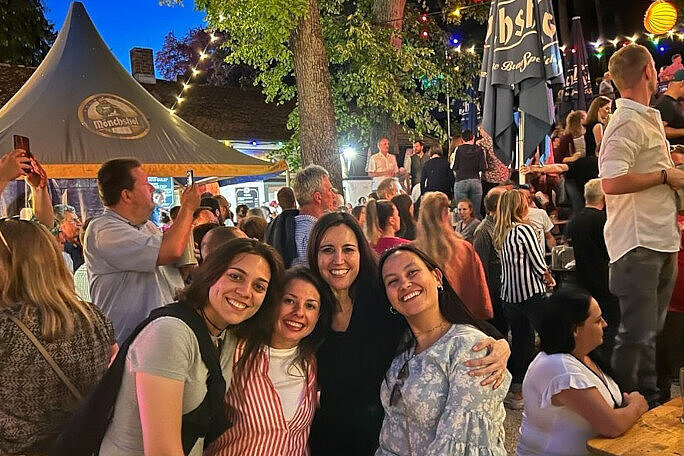
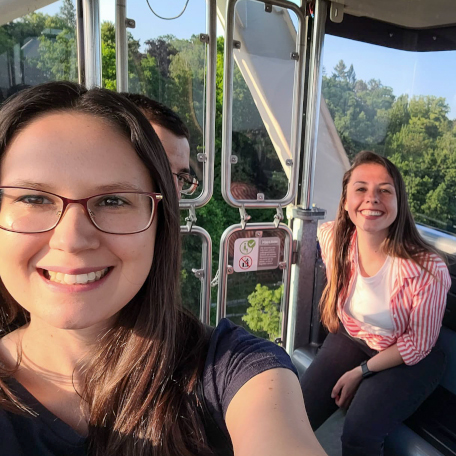
If you want to spend time with your family, you can arrive in the morning, bring your own breakfast or buy a huge pretzel to share with your loved ones and have a seat on the wooden benches shaded by trees. If you want to feel the adrenaline, you can choose one of the fairground rides. And, if you want to have fun with your friends, you can come at night and sing along at many available stages that have live performances, ranging from modern to traditional songs.
Of course, at any time, you can have a mug of beer, brewed specially for the festival and try regional delicacies such as sausages, roasted chicken, or the delicious “Schäufele”. There is no dress code for this event. Whether you choose comfortable clothing, or the traditional Bavarian outfits called “Dirndl” (for women) and “Lederhosen” (for men), you will feel the vibrant atmosphere of joy. This event is so acclaimed by all, that people even take a vacation to be there, and it is really worth it!
Bavarian Summer Adventures
During spring Bavaria is transformed into a beautiful green landscape, opening up all possibilities to explore its beautiful lakes, mountains and small villages. For those who don’t like venturing outdoors for too long during the cold winter, the warming weather and lush greens harbour the perfect conditions for outdoor adventures. I have been blessed to be able to go on many excursions with the Welcome Service of the University of Augsburg since I arrived in Germany. Augsburg is nestled in the perfect spot with great opportunities to explore villages, lakes or mountains, only a few hours away.
Two of the day trips that I can recommend to anyone are the hikes through the Partnachklamm (Partnach Gorge) and to the Andechs Monastery. On the trip to Andechs, you can take a ferry across the lake and then a relaxing hike up to the monastery, passing through beautiful meadows and wooded areas along the way. Once you have arrived, you will be rewarded with a spectacular view of the surrounding landscape, and you can treat yourself to Doppelbock beer and “Schweinshaxen” (pork knuckle).
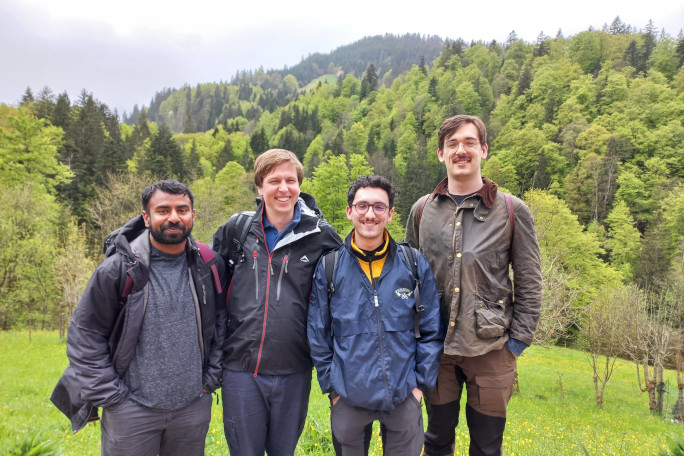
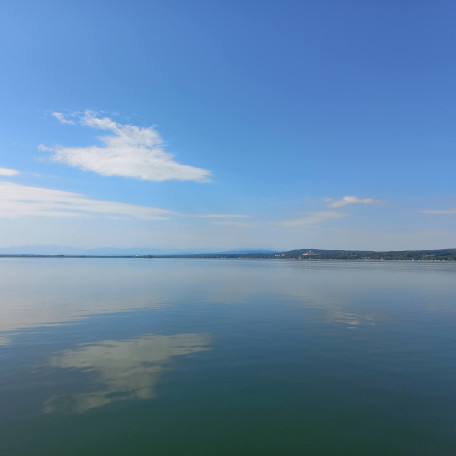
The hike through Partnachklamm is also ended off with a well-deserved treat as soon as you reach higher grounds. The day we went through there had been a rainy one, and the river was roaring through the gorge with all its might, demonstrating the sheer power of the water and giving you a better understanding of the memorials in honor of the workers, who had used the force of the water to drift tree logs down-river. It was a big contrast to the pristine blue pictures one can find on social media. What a magnificent view! After a short climb up the mountain, we reached the restaurant for lunch, where we had the BEST “Kaiserschmarrn” ever, which can best be described as scrambled sweet pancakes. Now that summer is just around the corner, it is time to go outside and experience many more adventures.
The Sound of Eichstätt
Working and living in Eichstätt can seem a bit overwhelming at first. As a very small city hidden in the Altmühltal, between Nürnberg and Munich, it is easily overlooked. One could even think this is done on purpose. Indeed, accessing Eichstätt by train can be quite an adventure, and winter months tend to blend into thick fog patches, only rarely letting the sun peak through. Nevertheless, Eichstätt's size and location turns the city into a place made for hiking. In just a few minutes, one can reach the woods, circle around the city up the hills, or follow the Altmühl (a veeeery slow river). The cobblestones, found very often in Bavarian town centers, morph into water as one walks from the Marktplatz to the Herzogssteg, finally arriving next to the "Kneippstelle" (a facility used for hydrotherapy, usually located in a park or spa).
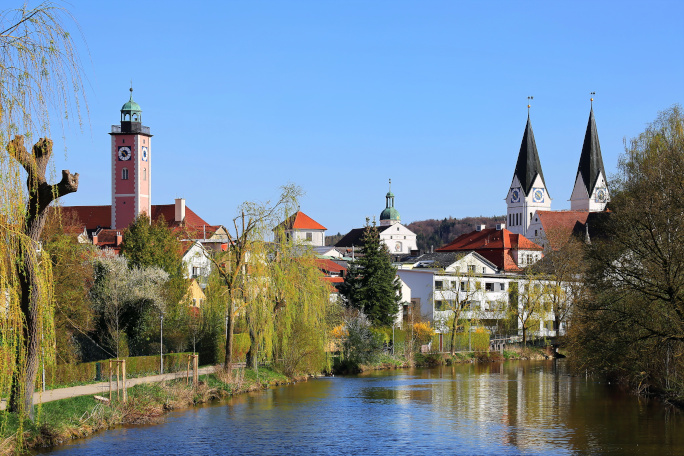
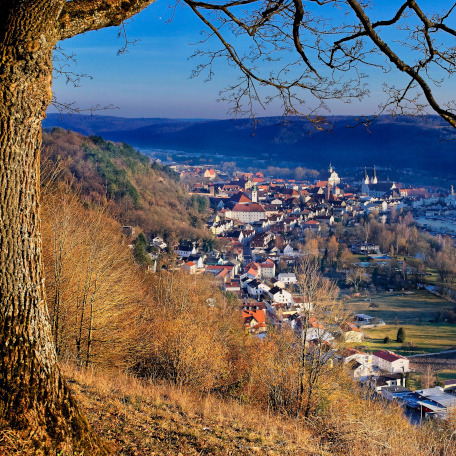
Of course, Eichstätt wouldn’t be Eichstätt without its churches. Their bells pattern the day, building a sonic and temporal grid, another map of the city. I think Eichstätt has something like ten churches, if not more. One can imagine the "cacophony" when they all decide to ring at the same time…
It is interesting though, how in Eichstätt, the sonic imprint quickly changes. Engulfed in the valley, sounds of the city sometimes bounce off the hills like a rubber ball thrown against a wall. But as soon as one walks up there, past the Willibaldsburg, past the Frauenbergkapelle, and just a bit deeper into the woods, the city disappears. When finishing my PhD, or working on an article, this is what I liked about being in Eichstätt: To be able to "walk it off".
Coming back home from this short hike, the sun sets down quickly behind the hills. Winter is not over yet, unfortunately, but I am already longing for those summer nights, sitting on the balcony with a fresh Hofmühl beer, listening to crickets, grasshoppers and birds sharing the soundscape with the city.
Christmas in Bamberg
After the long-suffering "staying-at-home" type of Christmas holidays for the last two years, the cozy and traditional Christmas atmosphere has finally returned. Since joining Bamberg Graduate School of Social Sciences as a Doctoral Fellow in 2018, there have been loads of life-changing experiences, above all, the arrival of our new family member. It is such a special feeling when you eventually introduce the beautiful Christmas culture to your child—holding in one hand a glass of Glühwein (mulled wine) or a non-alcoholic punch and a freshly grilled Bratwurst in the other while standing at the wooden bar and chatting with friends and family.


In addition, our family has adopted other German Christmas traditions such as decorating our Christmas Tree and wreath as well as writing Christmas cards while making sure to open a small window of the Advent calendar every day.
The pandemic over the last two years has been a tough time for all, but having said that, I find it all the more beautiful that we can now appreciate the Christmas season we might otherwise overlook. I would love to make the best out of it with my family now and bring this joyful spirit back to South Korea early next year. There, I would like to introduce my little one to another holiday tradition, a Luna New Year, which typically involves wearing a Hanbok (traditional Korean clothing), enjoying traditional dishes and playing some board games with the family.
It is a privilege that we can naturally guide our child to appreciate diverse cultures while feeling the same warm and kind togetherness in two different countries. It is an era of global diversity, indeed!
Bavarian Winter Activities
The days are getting darker and colder again and the first snow has already arrived in most parts of Bavaria. But instead of waiting for the chilly days to be over, put on some warm clothes and take advantage of the possibilities that Bavaria offers during this enchanting season. Discover numerous cold-weather activities and many other fun things to do.
Erlangen and Nürnberg
In the midway of my PhD research, my supervisor accepted a position as a professor at FAU Erlangen-Nürnberg and so I moved from Saarland to Bavaria, more precisely, to Erlangen. Every city in Germany has its unique spirit and for Erlangen, that means a classy academic environment accompanied by the presence of small and large companies. In German cities many palaces nowadays host the city hall or a museum. In Erlangen it hosts the university. Located right at the center of Erlangen, the palace is connected to a beautiful garden that is open to the public. Here, students can enjoy a sunny afternoon on the lawns, followed by a refreshing drink or a traditional Franconian meal in the nearby cafés and restaurants.
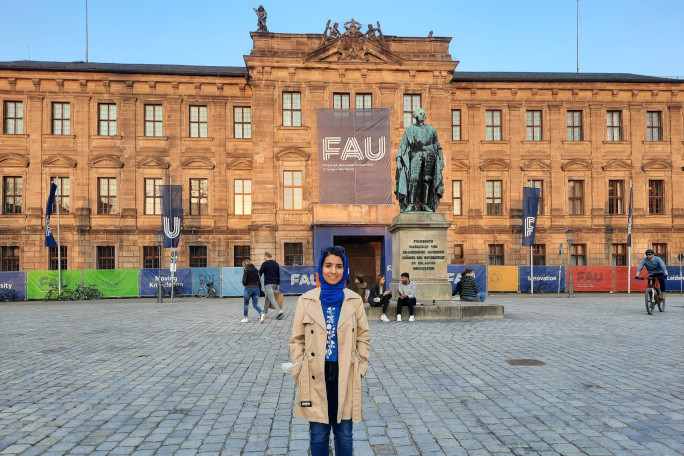
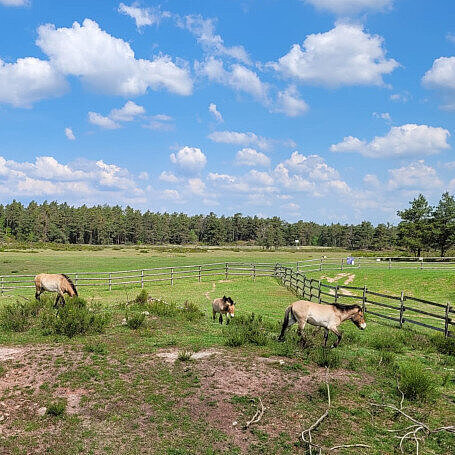
Erlangen is a small town, perfectly walkable, and cycling friendly. If you enjoy doing outdoor activities, discovering the area, hiking in the wooded lands and alongside the many rivers and water reservoirs, or visiting villages nearby, the city and its beautiful surrroundings will keep your weekends busy for a while.
On the other hand, if you are into the big-city entertainment, Nürnberg is just 20 km—a 15-minute train ride away. Being fascinated by history and arts, I have many reasons to visit Nürnberg and I do it quite often: the famous Altstadt with numerous historical landmarks, sculpted fountains, museums, and art galleries make Nürnberg my favorite place to spend time on Saturdays.
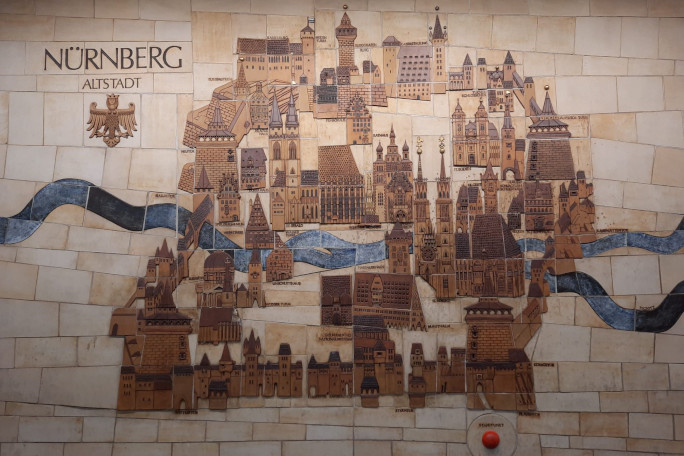
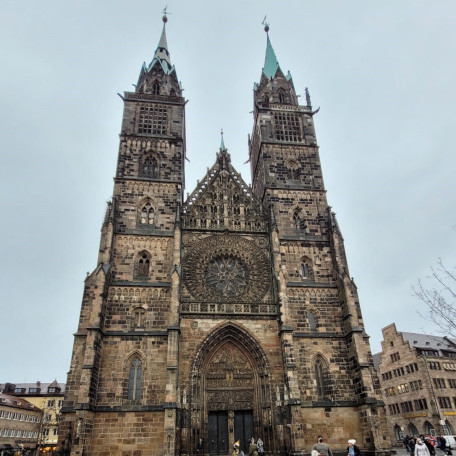
Run to the Top
As a proper nerd, staring for hours at my computer screen is kind of natural. However, sometimes the PhD goblin inside of me feels the urge to go outside and… I don’t know, move some limbs or whatever. Because I have a creative mind, I took an interest in an underrated and rather obscure sport: running.
Since I moved to Würzburg, I have experimented and tested different running tracks. The city is surrounded by hills, most of them covered by vineyards by the way. This is why running there involves almost systematically a near lung death experience for approximately 10 minutes, followed by a breath-taking view of the old town. Now, if your personality involves the need for feeling superior to other humans, being up on the hill, looking down on the city allows you to think of yourself as the master of the world—or of Würzburg (not so bad either).
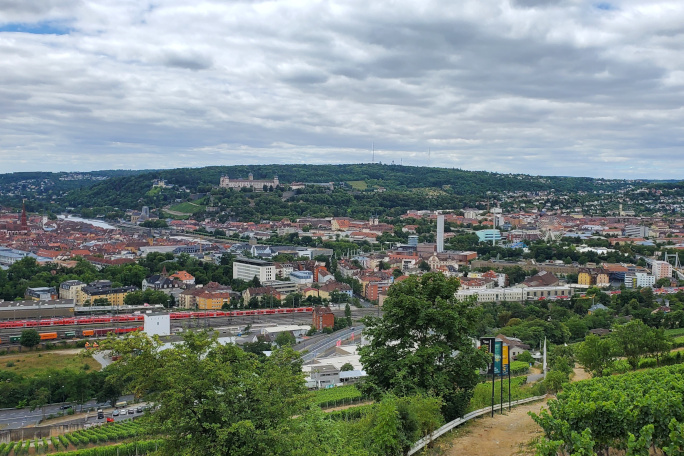
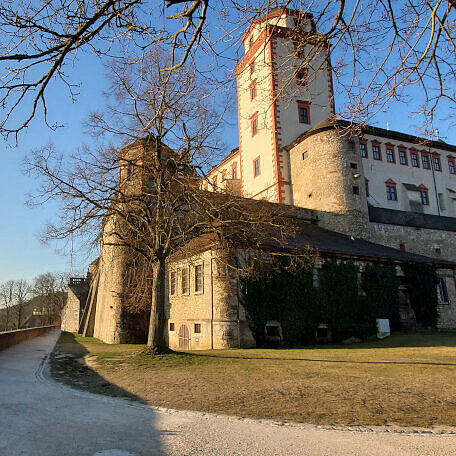
This latter reason is probably why they built this magnificent fortress, 'Festung Marienberg', which clearly exhibits a shameless look of superiority. The fortress holds the 'Museum für Franken'. If you manage to get there in a reasonable shape (not if you run there, like some weirdos…), visiting it is a cool activity to learn more about Franconian art.
Being on top of the hill provides you also with other opportunities, like seeing from atop all the cool activities Würzburg has to offer in the Summer, like the 'Umsonst & Draussen' music festival by the Main river, or the 'Kiliani Volksfest' with the Ferris wheel. Did I go there? Of course not! I’m a nerd, remember? But I can talk about it, because I have SEEN it—from the top of the hill, while being busy feeling superior ;)
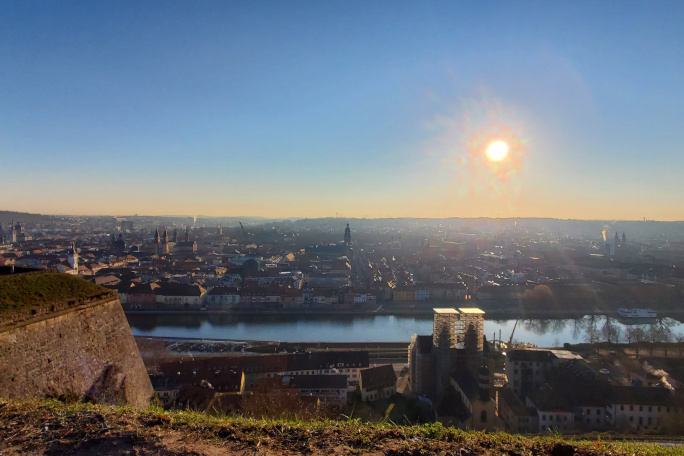
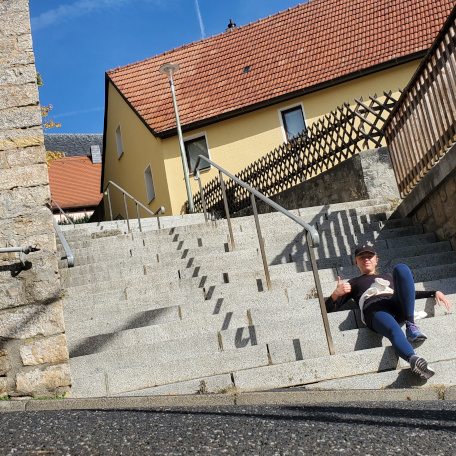
Erlangen—A Cycling City
After spending four years in Germany completing my PhD, I did not expect that moving to Erlangen for my new position as a postdoc would surprise me. However, I was wrong! When I left the train station for the first time I was overwhelmed by the amount of bikes that were parked just outside the station. I have never seen so many bikes parking in one place, not even in Cologne and Dortmund where I had lived before for nearly half a decade. When I walked a little bit further into the city center, and found that all over the city, there were bikes parking along the sidewalk.
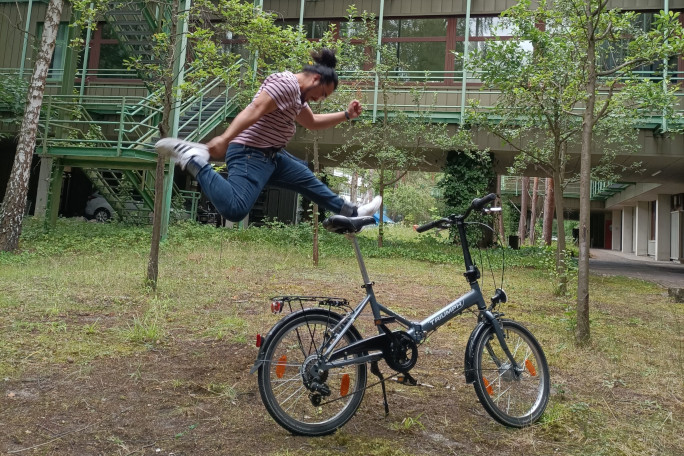
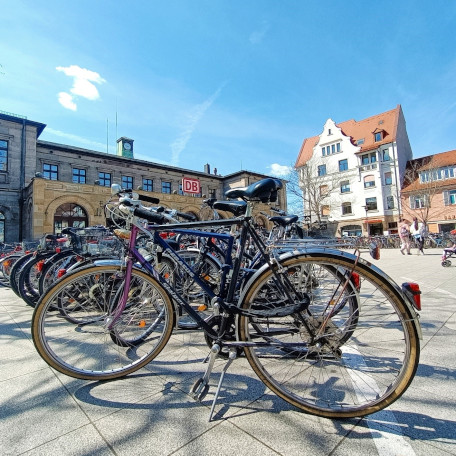
During my first weeks, I realized that Erlangen is quite a small city. I believe that this is why there are so many cyclists here. When I spoke to my colleagues who own a car, they said that they often use their bike as it saves them a lot of money—as gasoline prices were rising at that moment—and that cycling is good for your health and the environment. After 5 months living in Erlangen, I can say that as an international researcher the main advantage of cycling is that it saves you a lot of time and helps to improve your health after a week of intensive work at the university.
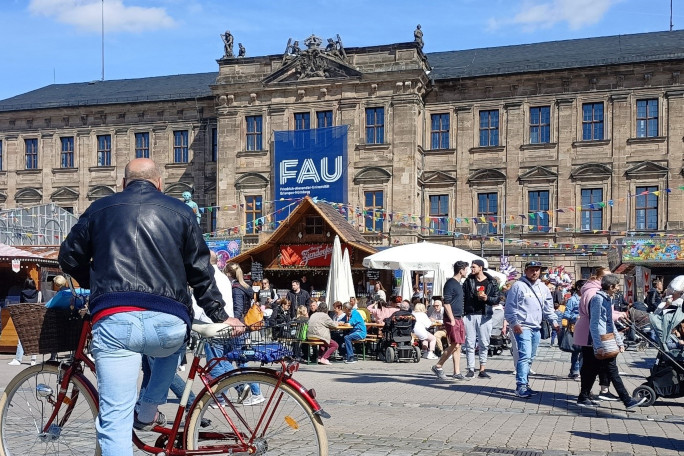
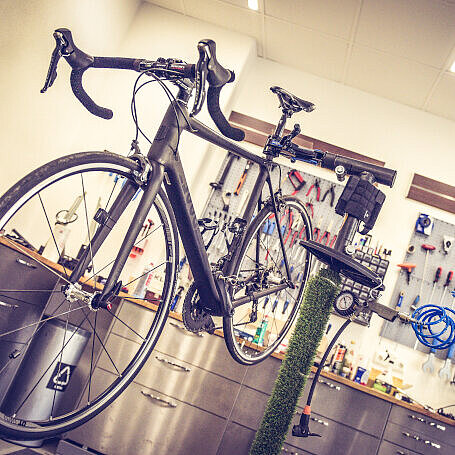
Later, I discovered E-Werk, a nonprofit organization providing free workshops on how to repair your bike. The workshop is held in multiple languages including Spanish, French, English, and more. On top of that, when you need a tool, you can walk into the shop and use their kit to fix your bike! So don’t think twice and just get started—Erlangen is ready for your bike!
The Long Night of Sciences
After a Covid break the much-awaited public event the "Long Night of Science" took place this year at FAU and at numerous other places in the greater Nuremberg area. The event is a unique opportunity to see, hear and experience the research happening at different institutes at FAU and partner organizations—for the public as well as for the researchers! During "Long Nights" in the past I had helped out at my institute's booth showing the visitors our research. This year, though, I at first roamed around and participated in various exhibitions from other institutes ranging from metal forging to robotics and artificial intelligence—it is so much fun learning about what other departments are working on and getting to know colleagues from other fields.

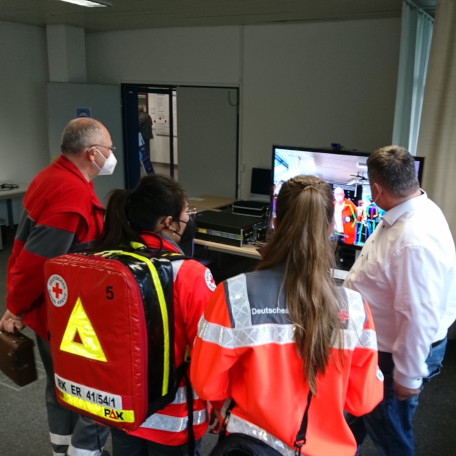
Later, when I reached my institute's booth, the "HPC village", I was startled to see paramedics entering the hall. But I was relieved when my colleague explained to me that they were just intrigued to see our fancy real-time human body facial and joint detection working. For the latter part of the day, I helped my colleagues at the booth by explaining to the visitors, in my broken German, how supercomputers are built and by showing them the latest technologies we operate, while others explained how "pocket calculators" worked 100 years ago. My colleagues and I had lots of fun, some parents on the other hand had a difficult time with their kids at HPC Village: Most of them had their eyes glued to the fluid simulation game developed by a colleague of mine.
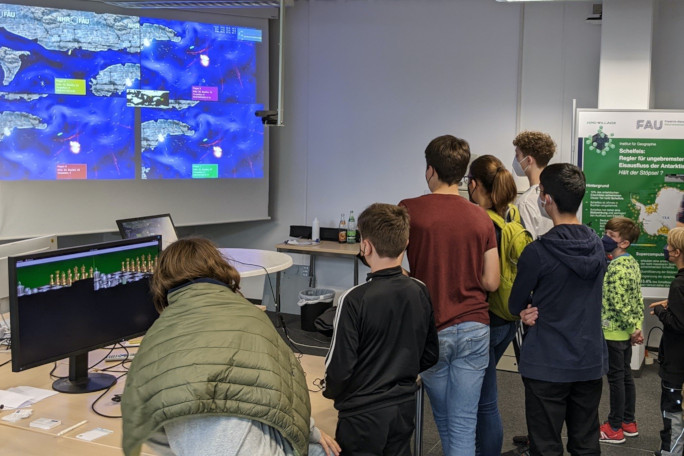
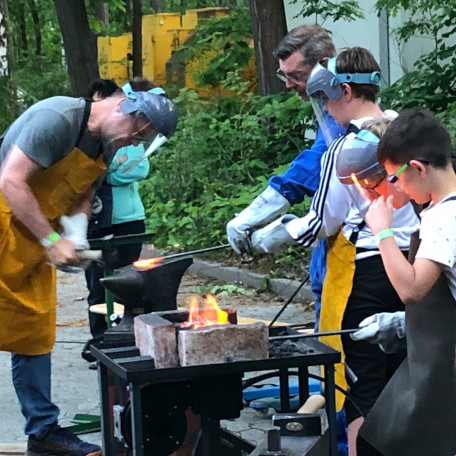
Different Places—Same Sunsets
Moving to a new country entails a great change of life, much greater than changing a big city on the capital’s suburbs for a small city in the countryside. Nevertheless, to my surprise, this change has brought about a great increase in my quality of life.
When I lived in Spain, I spent around three hours per day on public transport to get to my job. Since I live in Straubing however, it only takes me 10 minutes on foot to arrive on the campus of Technical University of Munich.
On the other hand, coming from an industrial-looking city, it's wonderful to find the perfect mix between nature and history in this small town in Bavaria. The Danube flows just next to the historic center of the city and its beautiful streets allowing you to immerse yourself in another era while you go shopping or have a drink with your friends.
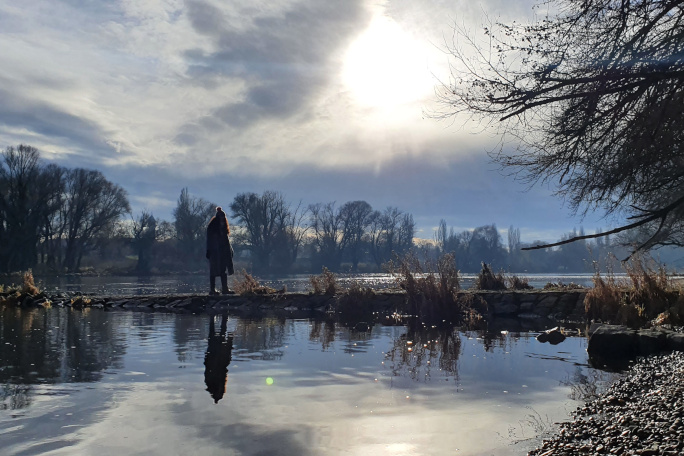
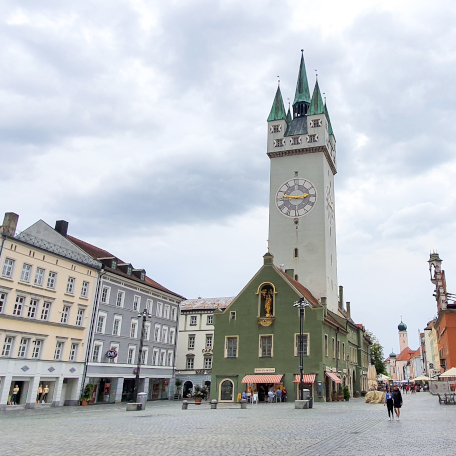
In fact, one of my greatest fears was to miss the broad offer in gastronomy and leisure that the big cities offer. Nothing could be further from the truth! In the six months that I have been here I have been able to visit new places and carry out new activities every weekend. This has been possible thanks to the big group of friends that I have found since I arrived here. The university campus brings a youthful vibe to the city and allows you to meet lots of people not only from other parts of Germany, but from all over the world.
On our last getaway, we walked to the neighboring town of Bogen to watch the twilight from the top of the hill. The view of the sunset over the horizon reminds me that despite being many miles away from my loved ones, we are under the same sun.
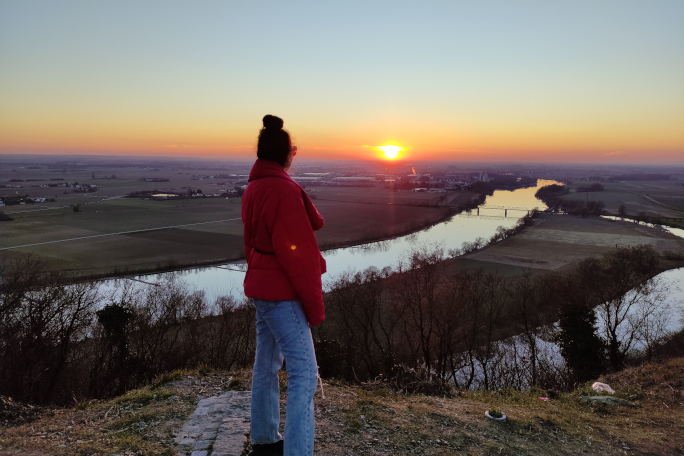
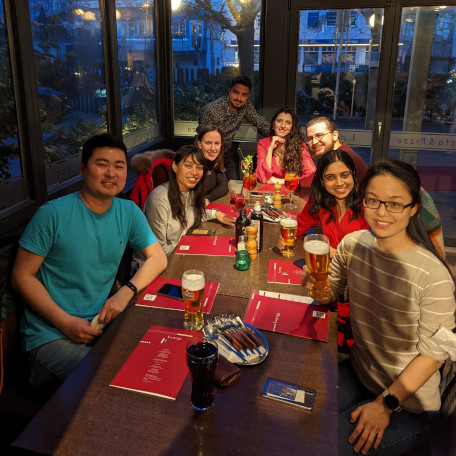
Spring is Coming
No matter where you are based, springtime turns Bavaria into a heaven of outdoor activities and attractions. Whether you enjoy hiking, visiting traditional festivals or meeting friends in a beer garden—Bavaria has it all!
Exploring Somewhere New
After moving to a new country and taking care of all the administrative and logistical items, how do you carve out a spot for yourself? How do you start to feel comfortable while also learning more about your new home? I believe the best way is to get as involved as you can with the hobbies and interests that you hold dear—you will quickly find your community in your new surroundings! For me, this was through my lifelong love of sports.
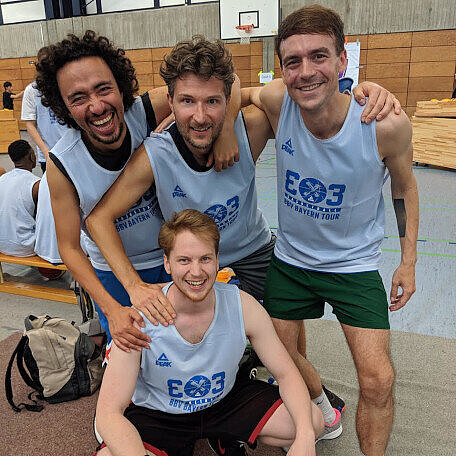
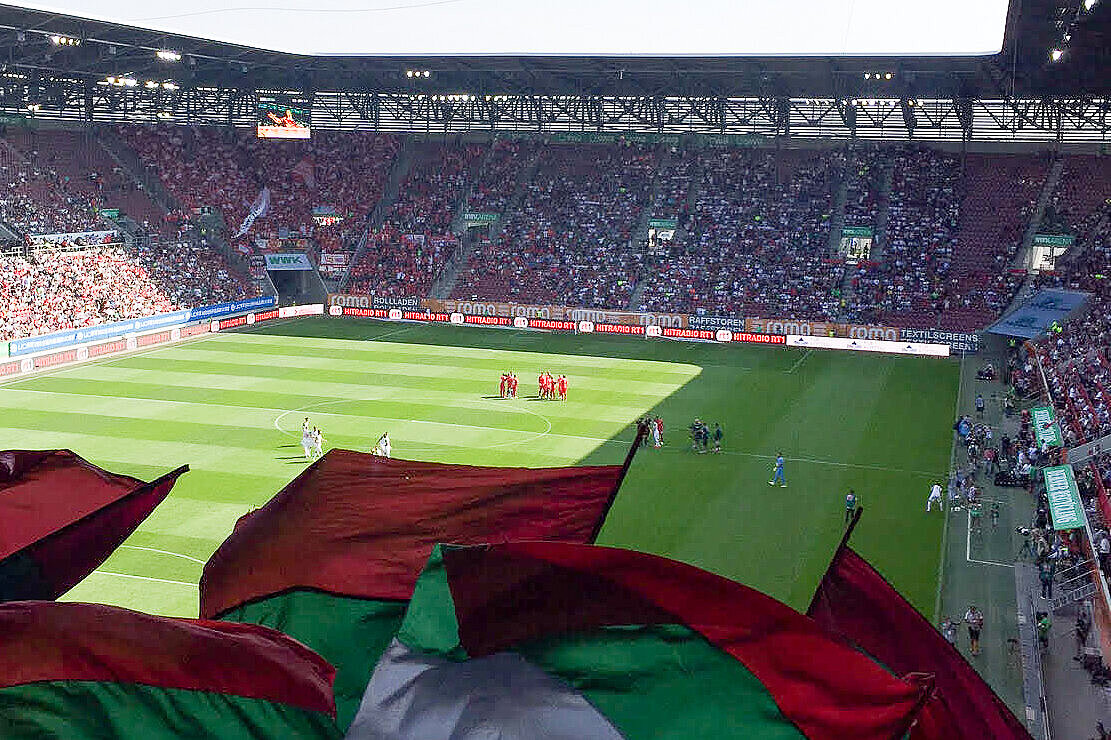
Living in Augsburg in the heart of Bavaria proved to be the perfect place for me to learn traditions, make new friends, and stay active while developing a deeper understanding and appreciation of the German and Bavarian culture—all through sport! I was able to join a sports club (“Verein”) where I could play basketball with other people from my neighborhood; I signed up at the local golf course so that I could bond with my new colleagues while playing; I became a season ticket holder for my local professional soccer team, FC Augsburg; I started running in local races in Augsburg and Munich; I went snowboarding in the Alps with new friends, and so much more!
Particularly, my basketball sports club and attending FC Augsburg matches gave me a sense of belonging and acceptance when I first arrived and felt awkward and out of place. Making friends in these contexts allowed me to be a part of a team—something bigger than myself—and helped me to feel calm and a part of local life. Sport truly became my "ticket" to integrating faster and more deeply into my adopted home and to finding a sense of community. I believe that turning toward your interests can help you do the same.
My Bike is the Best "Cycologist"
PhD studies bring an exciting experience to your life. Still, it often includes hours of sedentary work with the glow of the computer screen and the pressure of emerging deadlines. When I started my research in the field of lichen diversity and genomics in 2018, I did not even consider that cycling would become my way of coping with the large amount of information I had to digest as part of my PhD and the irregular work schedule.
I started cycling regularly when I moved to Munich for my PhD. Since then, my bicycle has become one of my best companions. The route to work takes me about 45 minutes. During this time, I arrange my thoughts, think about all my plans for the day, exercise, and get a bunch of energy and fresh air for the whole working day at the same time. On my way back home, I have time to analyze my achievements for the day and take a slow “cycling walk” along the river.
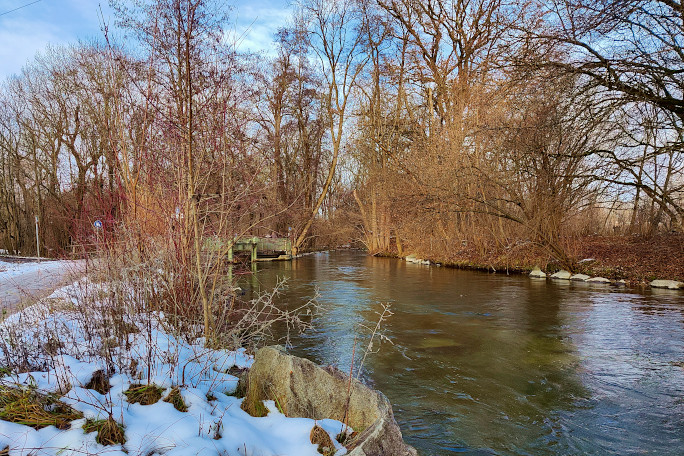
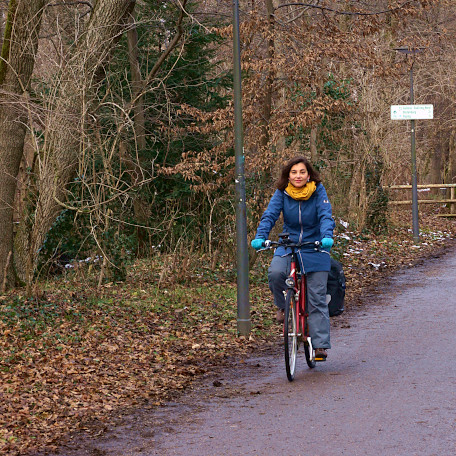
I frequently meet the same people, and we greet each other with a smile. Perhaps this is one of my best impressions of Munich. And all this, in addition to the beautiful scenery along my cycling route.
My way meanders along the Würm river, which partially flows through the Pasinger Stadtpark. Even though much of the track still lacks a proper cycling path, cycling has been a pleasant experience for me. Sometimes it’s challenging to cycle in winter with lots of snow on the ground, so I frequently take these days as an opportunity to work from home with a cup of coffee.
Last year, I participated in the cycling competition (Stadtradeln München) with my colleagues and friends from Botanischer Garten and the Botanische Staatssammlung. These places are remarkable and have become my second home since I began my research here.
Alpine Symphony
I have always been a great music fan. When I arrived here eleven years ago, I immediately bought a ticket to the opera and up until the pandemic, I was going there (or to the concert hall or similar institutions of other cities in Bavaria or Germany) once a week. The opera houses in German-speaking countries present more performances than the rest of the world altogether, so Germany is a real paradise for opera and classical music fans. I have seen fantastic performances, even pieces I had never seen or heard before.
My homeland Hungary is rather flat, so mountaineering was new to me; I had no idea that there were other ways of reaching a summit than with a cable car, at least for non-professional climbers. So, when we first visited the mountains around Garmisch-Partenkirchen, we saw that people (not just adults, but also kids) were on the top of Alpspitze, the most attractive peak in the region, which they must have reached "on foot." Then, I started looking into the possibilities of getting around in the mountains. My colleagues helped me to buy equipment and after some practice, I could reach the Alpspitze through its popular via ferrata.
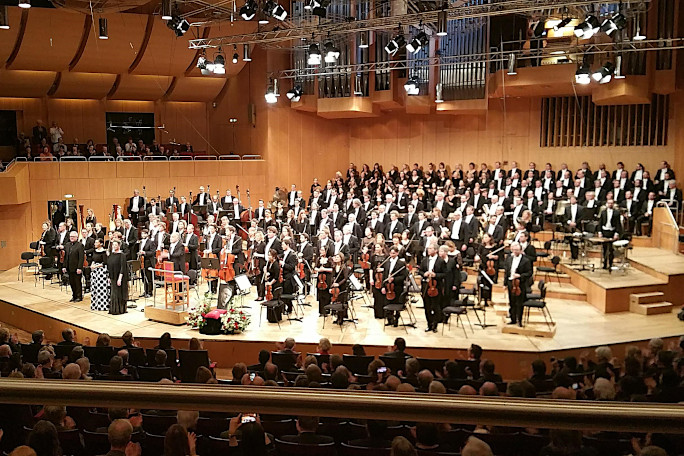
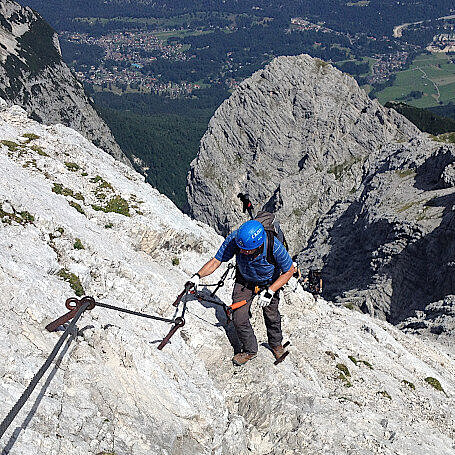
But the greatest experience of all has been the combination of these two: music and the Alps. Richard Strauss composed his Alpine Symphony while living in Garmisch-Partenkirchen, immortalizing his hikes from the city up to the summit.
Following his steps with his music in mind is a thrilling experience. They say the symphony does not describe an actual tour, but I think it can be composed of two: entering the dark forest, observing the sun twinkling on the droplets of a waterfall is like in Höllental, while the alm with cows is on the way to Schachen. That being said, sliding on the glacier is not really possible anymore, nor can you hear hunter horns. Otherwise, a storm up there can warn you with a descending nocturnal darkness, just as in the symphony.
I will never forget standing in the rain counting the pauses between the lightning and the thunder as they became shorter and shorter, just as Richard Strauss composed these pauses physically accurately. This happened only once. Normally, a day in the Alps offers perfect relaxation and helps you be more creative at work afterwards.
Bavarian Winter Traditions
In winter, especially during the festive season, Bavaria offers recreational opportunities for every taste: Whether you prefer cosy days at home, making traditional food with friends and family or are on the search for action-packed winter sports—Bavaria has it all!
Visiting the Neighbors
One wonderful fact about Passau, a beautiful city located in the southeast of Bavaria, is that it lies at the confluence of three rivers: the Danube, Inn and Ilz rivers. It is known as the „Three Rivers City“ (Dreiflüssestadt). Passau has many impressive historical sights and a lovely atmosphere due to the high number of international students. Fortunately, I am one of them, doing my PhD in Computer Science here.
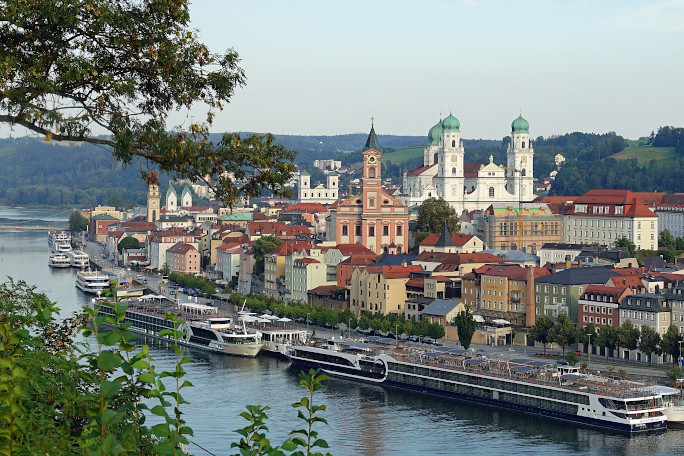
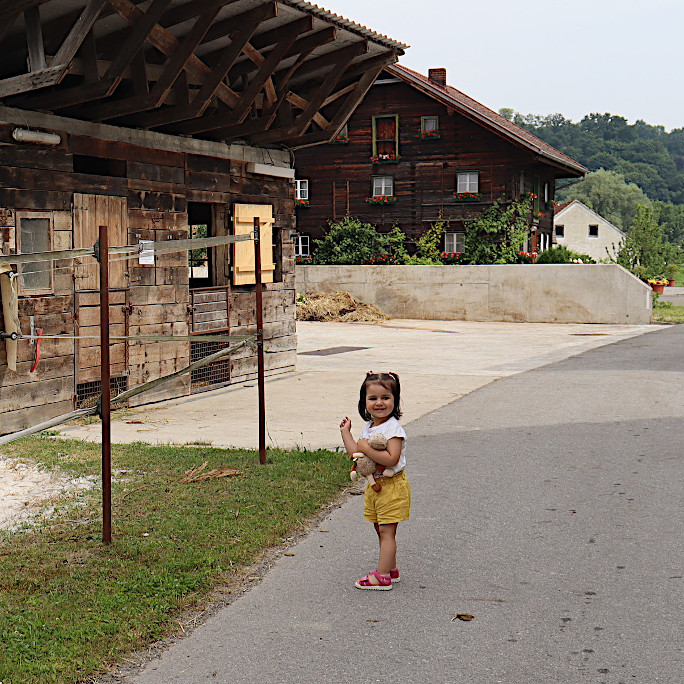
During my last holidays, I went for a walk along the bank of the Inn river with my family. At some point, we saw a big hydropower plant with a bridge on top of it. We were wondering if one could walk there… Why not try? So we decided to cross the bridge to the other side of the river. While enjoying our walk, we saw horses, cows, farmlands and children playing safely on the streets… Guess how surprised we were, when we realized that we were in Austria!
Within a five-minute walk to the other side of the river, we had moved from the German city of Passau to a small countryside in Austria—isn‘t that amazing? If it only could always be so easy to visit your neighbors!
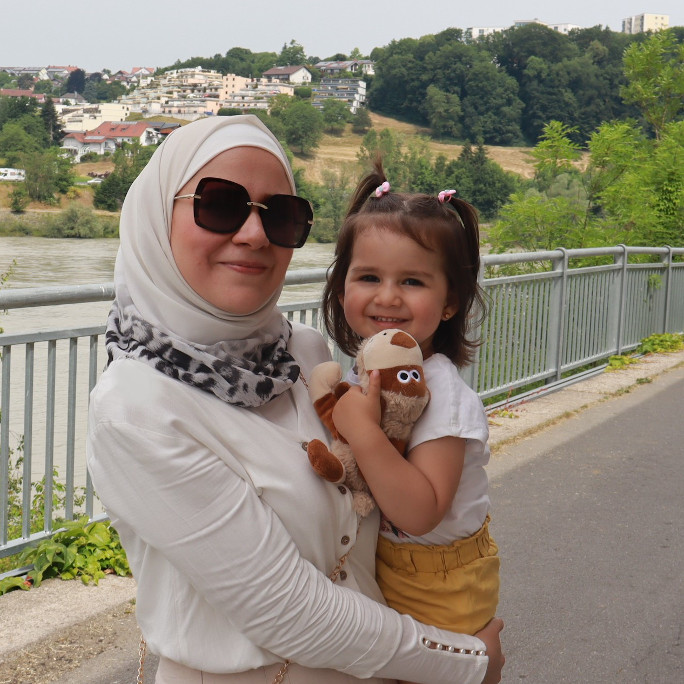
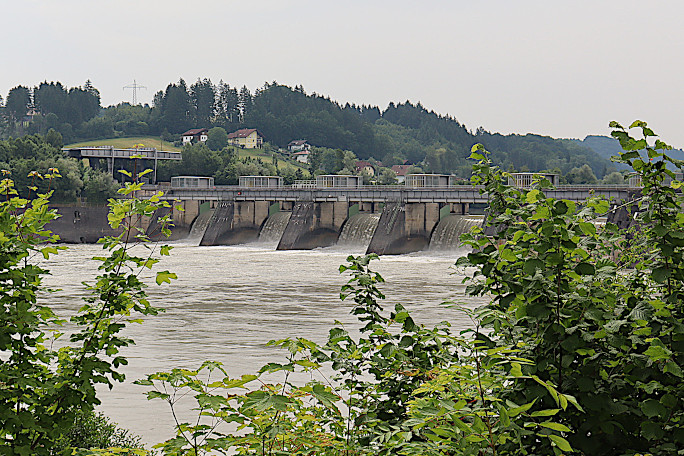
Arriving in Augsburg
The city of Augsburg is over 2000 years old, and it has been a popular destination for travellers for just as long. Founded by a Roman army advancing north after crossing the Alps, in the Middle Ages it became an important base for German merchants heading south, to Venice and the Mediterranean. Protestants from smaller towns across southern Germany moved to the city to enjoy its religious freedoms from 1555 onwards, and three centuries later workers flocked to its many factories during the Industrial Revolution.
When I first arrived in Augsburg last year, I was therefore following in the footsteps of all of these people. Of the three cities I study for my PhD in History, Augsburg is the only one which I had never visited. The spring lockdown prevented me from getting there as early as I would have liked, so to keep the frustration at bay I did some armchair travelling, reading the diaries of some travellers who had been there in the past.
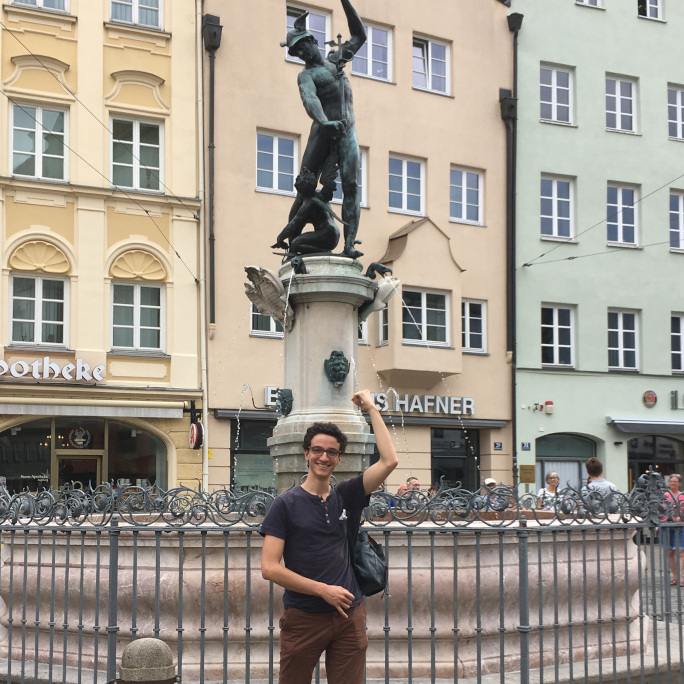
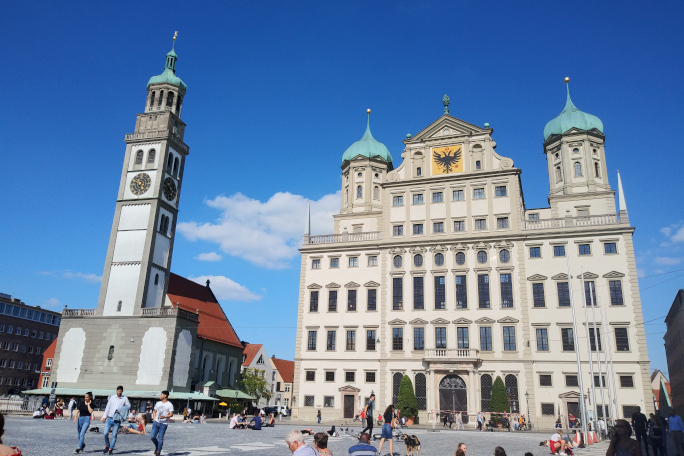
Once I finally made it to Augsburg myself, I was eager to see with my own eyes the landmarks they had described. For the first couple of days, I walked around until my feet were aching, paying a visit to the imposing Cathedral with its gothic spires, the magnificent Rathaus in the heart of the historic centre, and the beautiful Baroque fountains which are the focus of my research. However, the strongest connection to past travellers and their diaries came when I least expected it.
The Catholic church of the Holy Cross is less famous than its twin Protestant sister, which was built by the famous architect Elias Holl. If I pushed its heavy doors at all, it was to see the beautiful Ascension of the Virgin painted by Rubens, which still hangs there. As I turned to leave, I noticed a plaque inscribed with the story of a miracle which sounded strangely familiar. I stopped to decipher the text and realised that I had already read it once: the French philosopher Michel de Montaigne, who visited Augsburg 450 years ago, had copied it in his diary. Yet another reminder of just how many people, before me, had arrived in Augsburg.
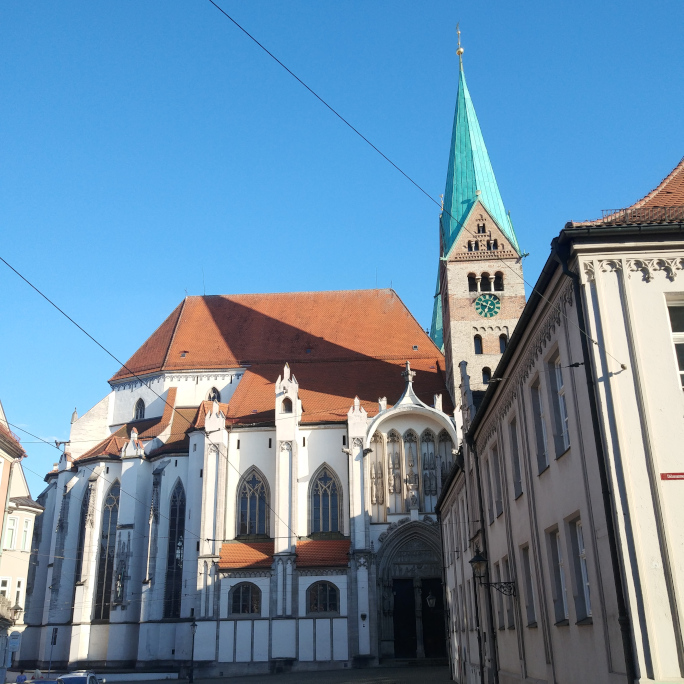
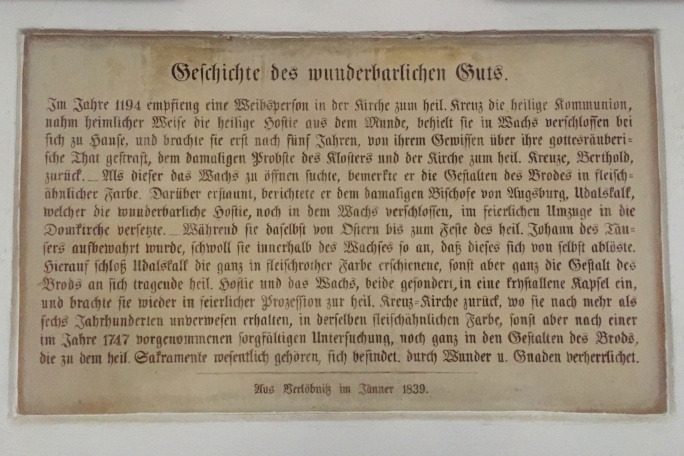
Kulmbach—A Land of Opportunities
As a Slovak national with international experience, moving from one German university town with deep historic roots—Jena, to another newly established one—Kulmbach, I found myself in the land of opportunities. In 2020, the University of Bayreuth opened its new „Faculty of Life Sciences: Food, Nutrition and Health“ here—and things are moving fast in Kulmbach. New laboratories are being built, new chairs are being established, new students are coming from all over the world. Observing and being part of the progress from day one is fascinating.
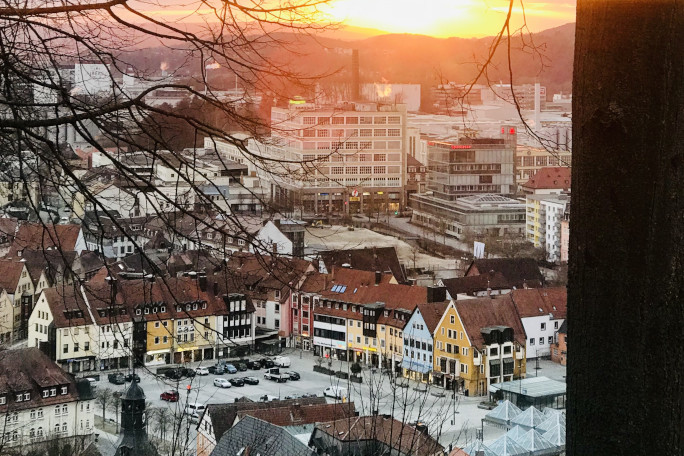
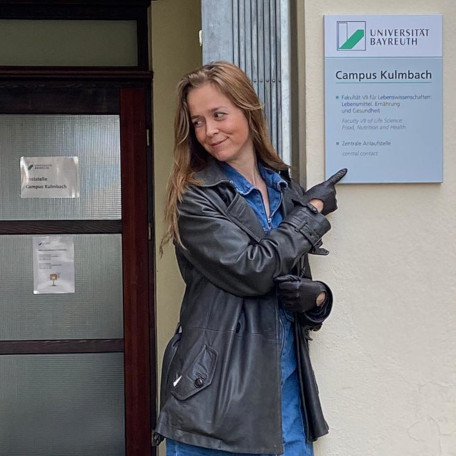
As it is often the case when things are starting up, the situation is provisional—and in times of pandemic demands even more flexibility. However, this can be a blessing too—everyone can pitch in, and everyone’s ideas count. A new gardening club has just opened on the initiative of the students. A small campus library has been established. Food trucks are coming in to provide catering until the mensa opens. Local businesses are eager to get involved.
When I look out of my office window, I have a view of the beautiful Plassenburg castle, and I am surrounded by red brick breweries, which constitute the heart of Kulmbach—the secret world capital of beer. Within a ten-minute walk in every direction from the campus, you can reach the deep Franconian forest. We are in the middle of the second semester, and looking forward to what the future will bring.
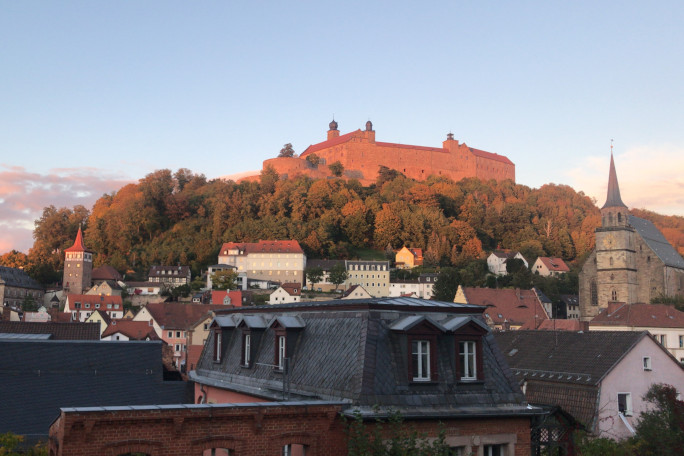
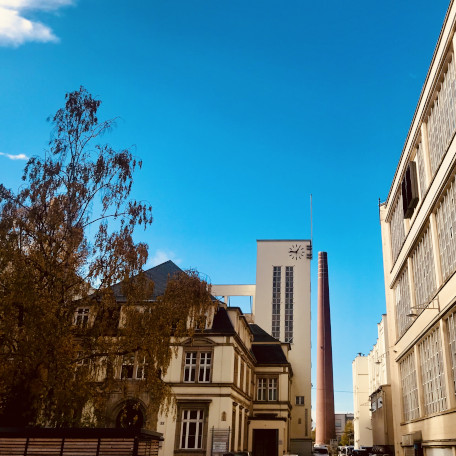
A Magical Way to Meet New People
As a teenager who grew up with Harry Potter, I knew that quidditch was a magical sport played on flying brooms. But it wasn't until I started my PhD in Munich that I discovered that quidditch is also played in the real world.
My first training was a lot of fun, and, before I realized it, I was already part of the team. Everyone was welcoming and friendly, and they guided me through the surprisingly complex rules of the game. For the blog, I will only say that four players (chasers) try to throw a ball (quaffle) through three standing rings, while two beaters of the opposing team try to hit them with dodgeballs (bludgers).
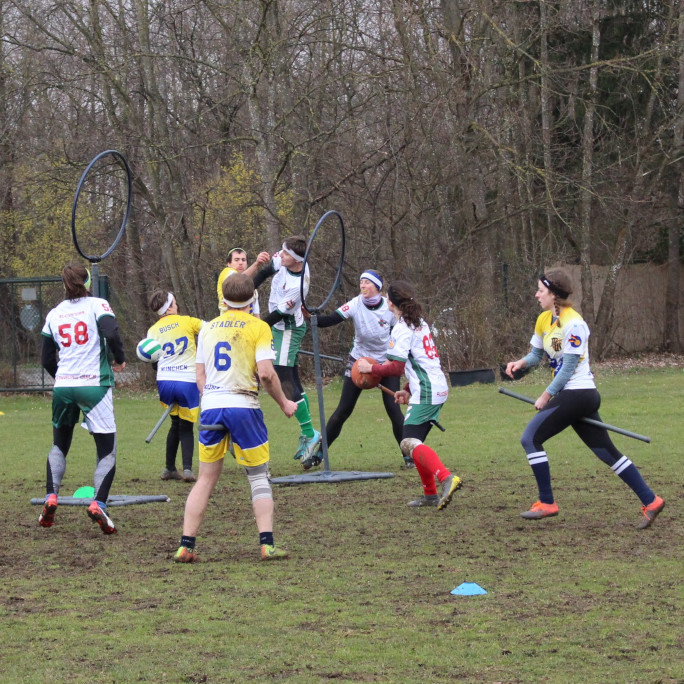
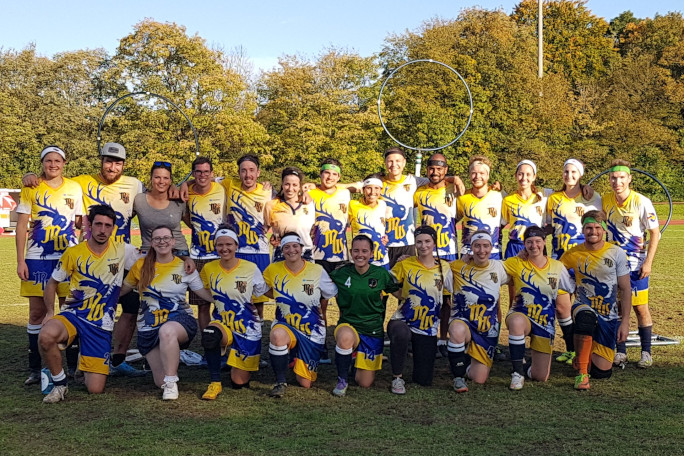
My team is called Münchner Wolpertingers and is actually named after a Bavarian fantastic beast. Because we are a handful of international players, our official language is English. However, there is always an opportunity to learn about German culture or even the Bavarian dialect.
Thanks to quidditch, I have traveled to other cities in Germany for local and national tournaments, such as the Bavarian League, where Munich is playing together with Augsburg, Bamberg, Passau, and proximately Eichstätt, Landshut and Nürnberg.
In Tune with the Earth—Bamberg’s UniGardening Project
When I was a kid, I used to watch my grandpa watering and looking after his small garden. He seemed to be very happy and cheerful spending time there and taking care of the vegetables. Sometimes, he would ask me to fill the watering can and water the garden all by myself; that feeling of happiness and accomplishment when I was helping him has always been with me.
I lost my grandpa a few years ago, and his small garden is dead now. I’m living thousands of kilometers away from that old beautiful house which used to have a green garden. For the past few years, I have been doing my doctoral studies at the University of Bamberg. Those who have started their PhD journey know that it is a challenging path. There are times when you feel you can’t go on any further because you feel stuck and overwhelmed. Then, some kind of distraction is necessary and helpful for your mental health.
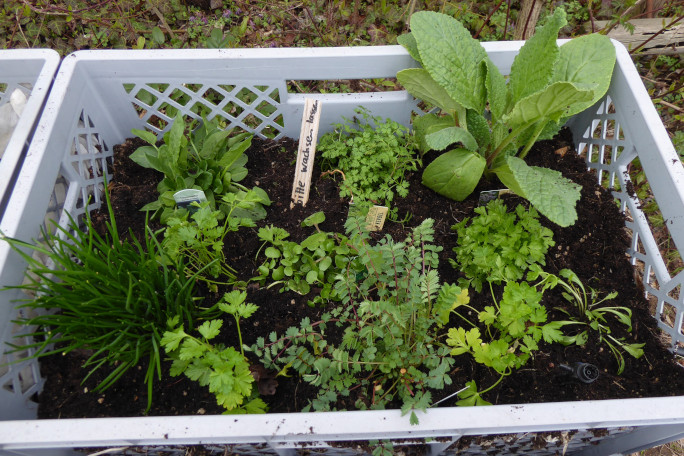
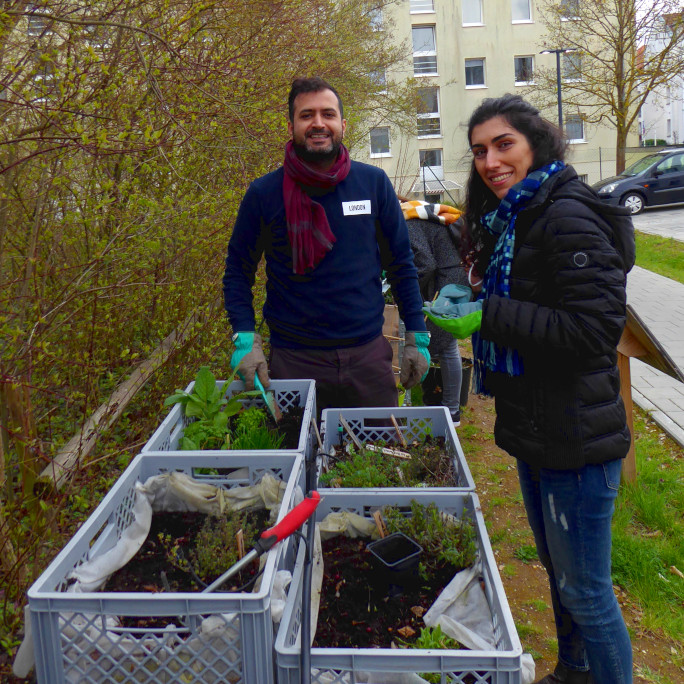
I came across the UniGardening Project when I was sitting in the office trying to overcome writer’s block. I received an email from the university’s International Office inviting those who are interested in gardening to cooperate in the project. All of a sudden, there was a vivid memory of my grandpa smiling and tending to his garden. I saw myself hovering around him and helping him with watering and weeding; and immediately I decided to take part in the project.
I am very excited about it now. Together with my friend I am taking care of our tiny beautiful garden! Gardening and getting my hands dirty in the soil is a mood-booster for me; a distraction to chill out from the busy stressful days of PhD life. Growing my own little garden gives me a sense of accomplishment and helps me focus on beautiful things; I feel I am more in tune with the earth. Besides, it is hugely rewarding when you’re eating what you’re growing. I’m sure we’re going to have lots of fun growing and nurturing our tiny garden, thanks to the UniGardening Project!
Indian Food and Leberkäs Friday
I was looking for a scientific position in Germany for quite some time, as the country is known for its excellent research in mechanical engineering. Being a mechanical engineer myself, I was intrigued and eager to come here as soon as possible. At a sustainability conference at IIT Guwahati, India, where I was pursuing my masters back in 2017, I met Andy, a research associate from Hof. The research topics in progress at his research institute sounded very exciting. After a job interview in 2018, I started my research career in Hof in 2019.
As an Indian, food is an important part of my life. I enjoy cooking, and I knew that my colleagues loved Indian food. That was why I invited my colleagues for a get-together with Indian dinner last year, but the preparations were not as easy as I thought initially.
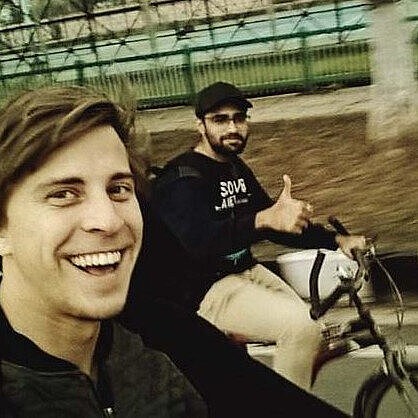
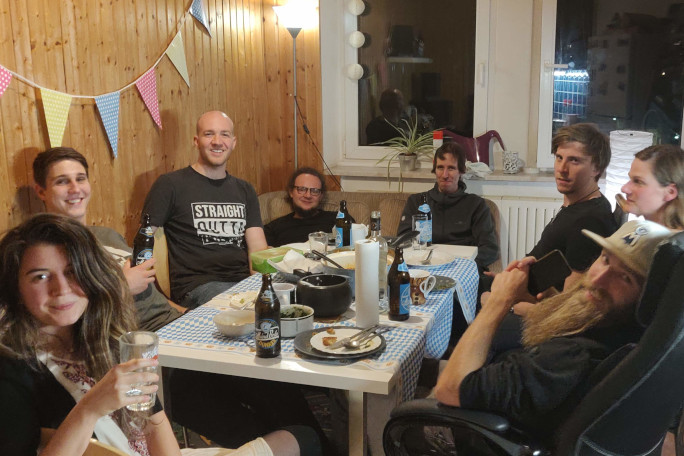
The hardest thing was to fix a suitable date for everyone, which was quite surprising as in India we arrange meetings spontaneously and here, I had to schedule our party three weeks in advance. In the end, we could have them all in one place, and everybody had a fun learning about Indian cuisine and enjoying the food.
In India, we generally eat warm dishes. In Germany, on the other hand, people often eat cold food, like the famous “Butterbrote” (sandwiches). It was also interesting to see that there are so many bread varieties in Germany, available in different sizes, shapes and degree of softness.
Recently, we have also introduced a ritual called "Leberkäs Friday" in our institute, in which for breakfast we prepare a sandwich, which is made by putting Leberkäs (meat) inside two buns with mustard sauce. As I am vegetarian, sometimes I join with cheese instead of the meat, too. It allows me to enjoy some food as well as some light-hearted conversations with my colleagues. Overall, my research experience in Bavaria has been really nice and I hope it stays the same for the coming years as well.
A Mountain Enthusiast
As a mountain enthusiast, born and raised in a family of mountain enthusiasts, I truly enjoy skiing and hiking. Exploring the Bavarian side of the Alps has been a priority since I arrived in Munich. The relative evenness of the highland area south of Munich allowed me to practice a sport I've never tried: mountain biking!
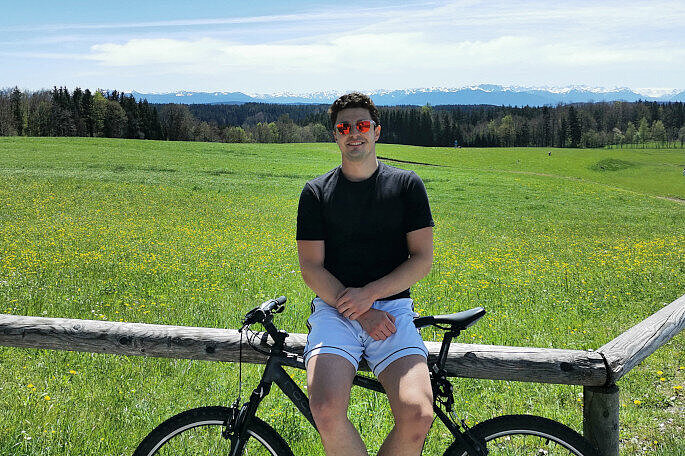
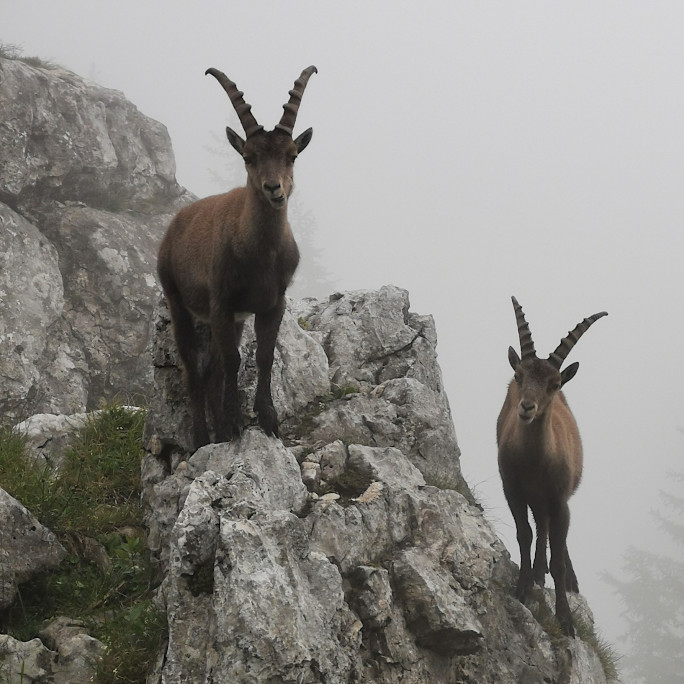
Ranging in the Krün-Mittenwald area, very close to the Austrian border, there are a number of stunning places to visit. Plenty of small lakes and hikes suitable for both experienced and novices adventurers are within an hour or less from Munich. Given that even towns are relatively elevated there (1000-1200 meters above see level), most tracks are only moderately steep and can be explored with mountain bikes, something I warmly suggest!
My favourite trip was the one to the Isar springs, in Tyrol, which took about three days starting from Benediktbeuern. If you have the opportunity, don't forget to grab a beer in one of the many breweries around there and have your camera at hand—the geography and fauna of the area allows for rare and beautiful photo-shooting sessions and animal encounters.
Easter Bunny and the Egg Hunt
I came to Germany in 2003 for my postgraduate studies in Physics. I have stayed on since then and pursued a career in research here. Presently, I am doing research on placenta at the Institute of Neuroanatomy in Munich, holding seminars in Neuroanatomy for the medical students and enjoying the life in Munich with my family. One can say that we have settled down in this beautiful, children-friendly Bavarian city.
Having spent a significant amount of time in Germany, I feel quite accustomed to the way of life here. Before having kids, I thought I knew everything there was to know about Germany. However, it is only after having a family that you get woven into the social fabric of the society and discover the amazing facets of the culture and traditions here.
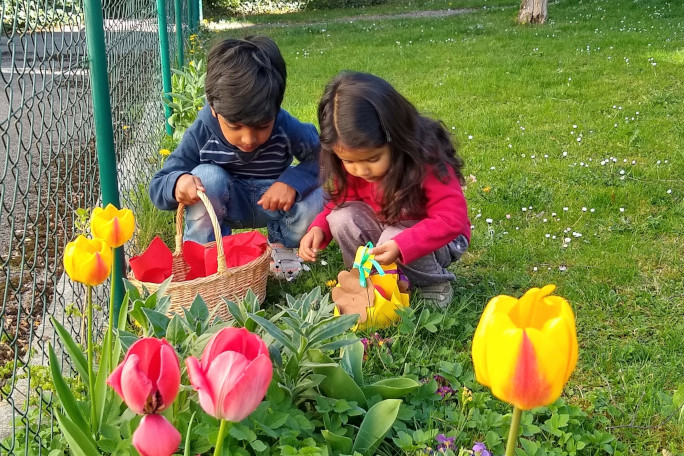
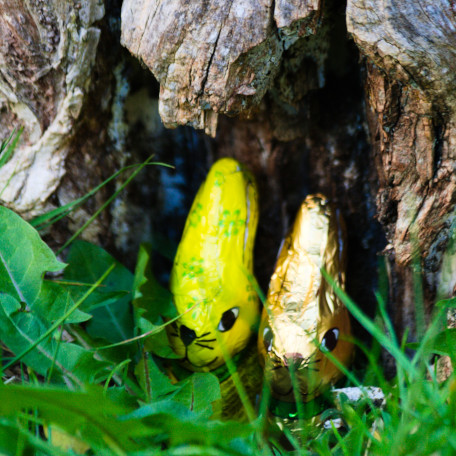
With Easter around the corner, we have already put out decorative eggs in the garden as a sign for the Easter Bunny that the children would be looking forward to its visit. In Bavaria, on Easter Sunday the Bunny usually hides coloured boiled eggs and chocolates all over the garden. As the morning arrives, the little ones go on the Egg Hunt and then feast on their hard-earned spoils of the hunt.
Bavarian Easter Traditions
As well as for Christmas, Bavaria has many traditions for the time around Easter holidays. Of course, people celebrate the end of the fasting period with speciality dishes, but you will also find a lot of things to do and to see at this time in spring!
Prepared for a Fresh Start
Winter has always been my favourite time of the year. I look at it like time is turning a new leaf and is preparing me for a fresh start. My experience of the Bavarian winter was nothing short of the same.
I arrived in Augsburg in September 2020 when the temperature was already so cold, it would be considered winter back home—but there was a different liveliness to it. Personally, I have never lived in a cold climate country. Sure, I had travelled to several places with similar temperatures, but becoming a resident is a different story. However, my apprehension quickly subsided by the first beautiful spray of snow throughout the city.
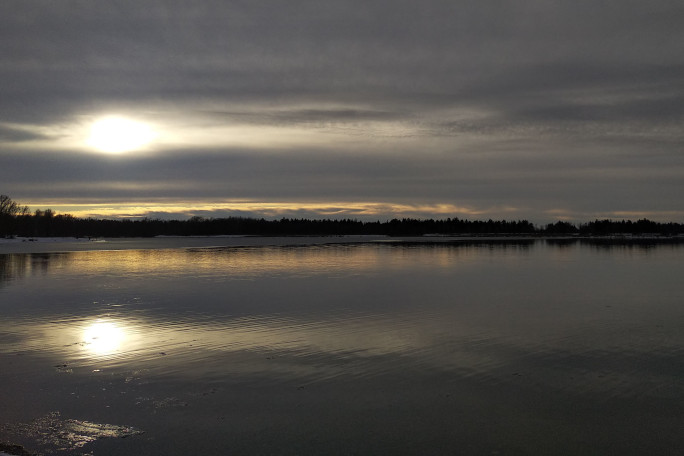
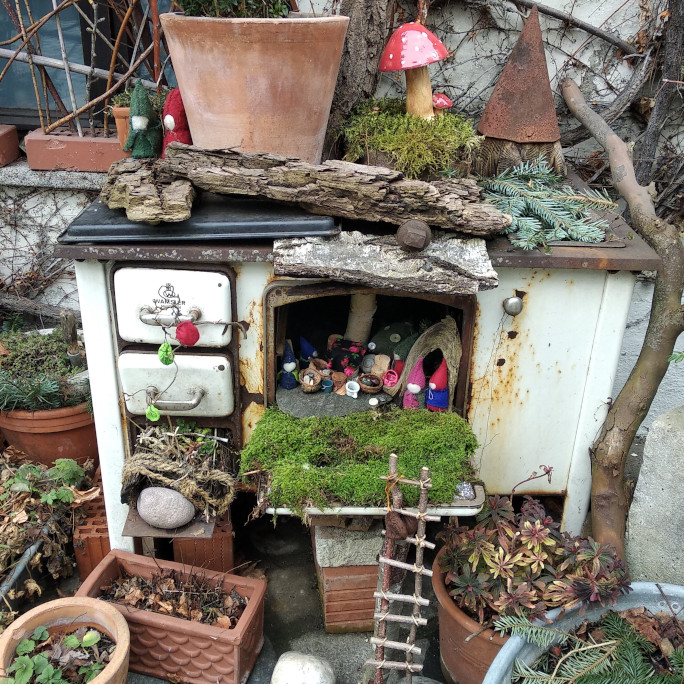
Even though the lockdown stretched through the complete winter, one could still revel in the beauty and serenity of the cold. From lakes freezing over to landscapes covered in snow—winters in Bavaria are nothing short of magical. Children and adults alike can enjoy sledging before having a hot chocolate or Glühwein (hot spiced wine).
Temperatures are starting to rise now. The sun is out, melting the snow off the winter decorations and people are engaging in outdoor sports again. Spring is right around the corner. I hope it’s going to be just as exciting as this winter in Bavaria!
Winter in the Bavarian Alps
The first time I came to Bavaria in December 2017, as a backpacker tourist, I spent a lot of time exploring the Bavarian Alps. Two years later, when I completed my PhD, I moved to Munich inspired by the mountains, and attracted by research opportunities and the great living standards.
From December to March, within a short train ride one can be transported to a winter wonderland. The train service offers very affordable day-tickets for groups allowing friends or fellow researchers to get out together. In normal times, this helps you to get to know colleagues in a relaxed and informal setting or just simply getting to know new people in the city.
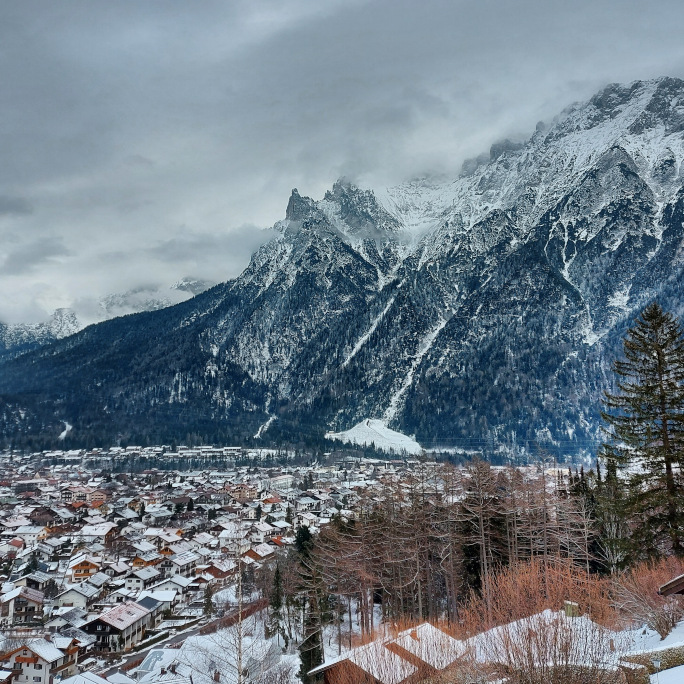
On weekends, I often walked a trail with some old and new friends. Since I spend a lot of time working at my desk during the week, such walks are pretty rewarding. After a fresh snowfall, the whole landscape transforms into a magical white experience.
After a good walk, we used to warm up with some Bavarian delicacies such as Käsespätzle or Schnitzel, and a beer, or simply hugging a mug of hot chocolate while enjoying the winter sun and views. Looking forward to enjoying these specialties soon again during my excursions!
Establishing Knowledge Systems at Home
I'm working on abstract knowledge systems that we want to represent on the computer. It's about structuring knowledge similar to a mind map system. The idea is to visualize the relationships of concepts in a way that a normal user can see the knowledge structure easily and fast with the help of our system.
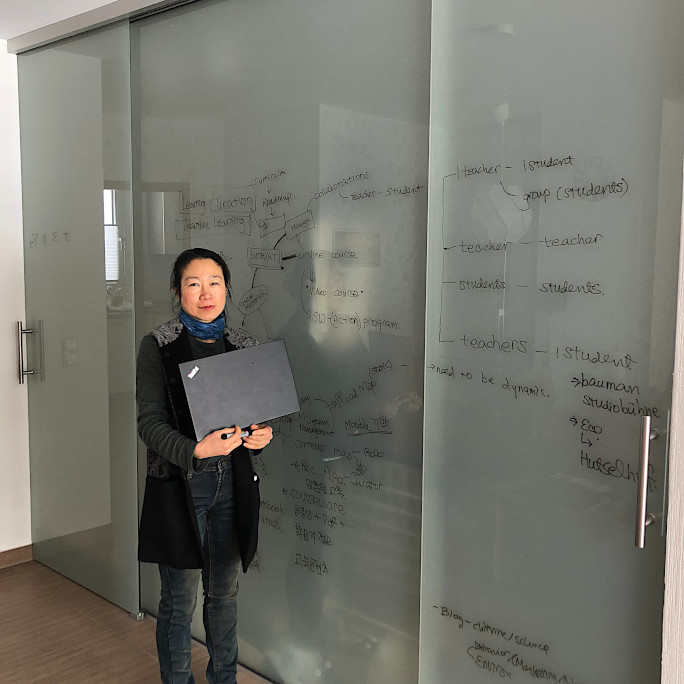
Since my work is mainly playing with abstract ideas, it is important for me to combine it with physical movements. That way I can immerse myself better in the research activity. Some offices and study-cafes in Korea had large "glass walls" for this purpose. In Germany, I usually use flipcharts and large wall magnet boards in the office.
Now at home, I have discovered a new form of a glass wall—it is actually a normal-sized sliding glass door! I use it to change methods to get myself thinking about new ideas and approaches. On my "glass wall" I have developed my research ideas in a mind map style. The board helps me to develop my ideas playfully and to be able to incorporate changes at any time. The bigger the surface is, the better it is for finding ideas!
Life Changing Commitments
My PhD project was 2 years old when I decided that it was time for another life changing commitment. I wanted to adopt a dog. I visited shelters in Bavaria. Nice people, but my situation did not convince them. As my title suggested, I was a PhD “student” and my contract was limited. They meant good for the dogs but never would I ever reach their conditions: a house, a garden, a full-time contract, a life partner, no kids, a good salary but only few hours of work per day.…
Not giving up when facing refusals as any researcher, I looked for shelters further away. I found an Italian association that rescues dogs from the streets, vaccinates and microchips them before finding them a family all over Europe. I felt for that cute, one-year-old dog named Willy, scared, but willing to learn. Few weeks later, I was on my way to Italy to pick him up.
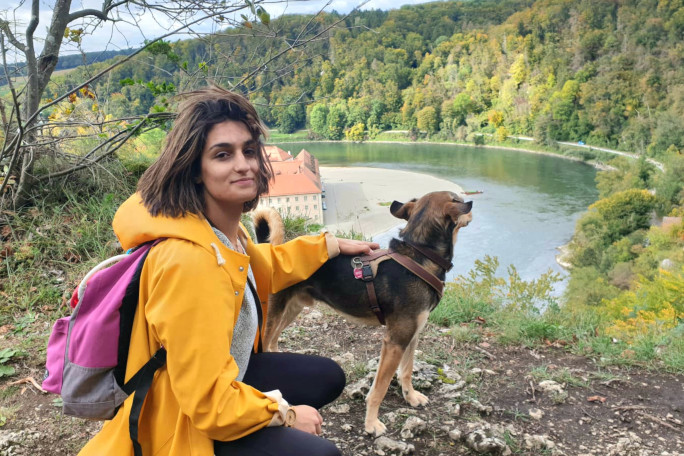
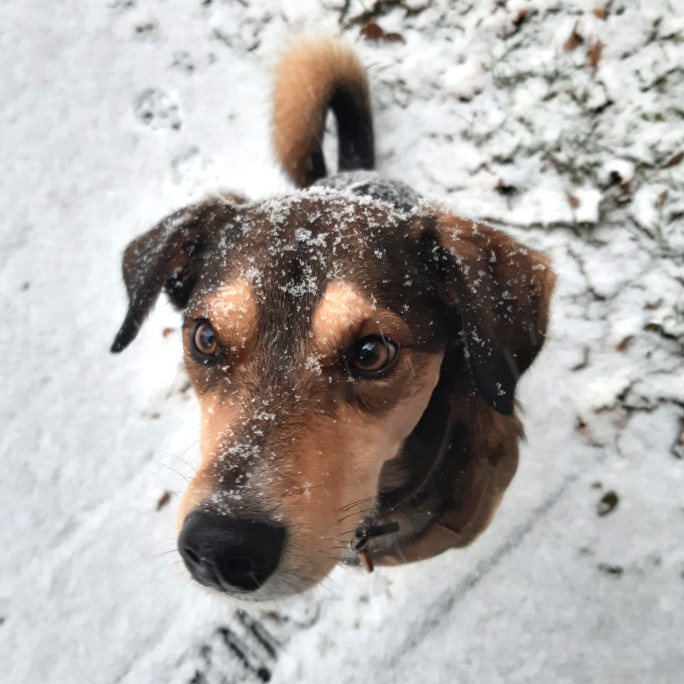
The first weeks were complicated; I had to spend a lot of time trying to get him used to his new life. With a lot of patience, love and determination. Having a dog forced me to walk a lot, to take some fresh air and to meditate during our daily excursions, while Willy had to adapt to my working hours and to my lazy mornings on the weekend.
And that is what dogs and humans do. They adapt to each other. Willy forces me to move my lazy self and to exercise every day. I give him the food he needs and the treats he likes. When I work from home, I take some breaks to teach him new commands like “turn”, “roll” or even “open the door”. A dog chases away loneliness and gives us the unconditional love we hear so much about.
Willy made me see Regensburg from a new angle: beautiful parks, crazy snowy landscapes and hilarious encounters with other dogs. In a world without quarantine and restrictions, some restaurants and bars allow dogs to lay next to you, so I was able to keep meeting friends in the city centre and will hopefully be able to do so in the future. On excursions throughout Bavaria people are receiving us with a smile and a bowl of water. One commitment did not exclude another. I am still on the way of science and now there is a beautiful dog walking next to me.
Asking for Directions
I have been a PhD student at the University of Augsburg since October 2018. Starting out here was relatively easy because the University's Welcome Service was there to get me settled in. My only challenge was how to get around in Augsburg. I only knew one landmark, and that was the main train station. I did not know the route to my institute nor even to any of the closest grocery stores. I relied entirely on Google Maps to get around the city.
One day, I forgot to charge my phone, and yes, the inevitable happened. Halfway into my 7 km bike ride home from the institute, my phone blacked out. I had two options: either to continue riding until I somehow miraculously found my way to the apartment; or speak some German and ask for directions to the main city center. I thought to myself that the former option would be a huge gamble, and therefore decided to ask a random rider, as we waited for the traffic lights to turn green.
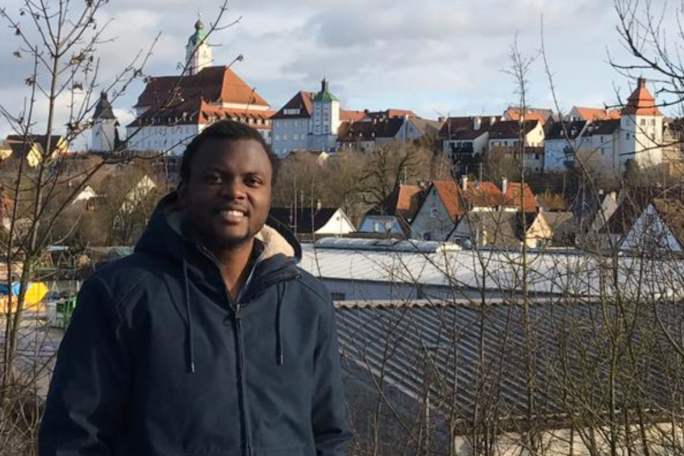
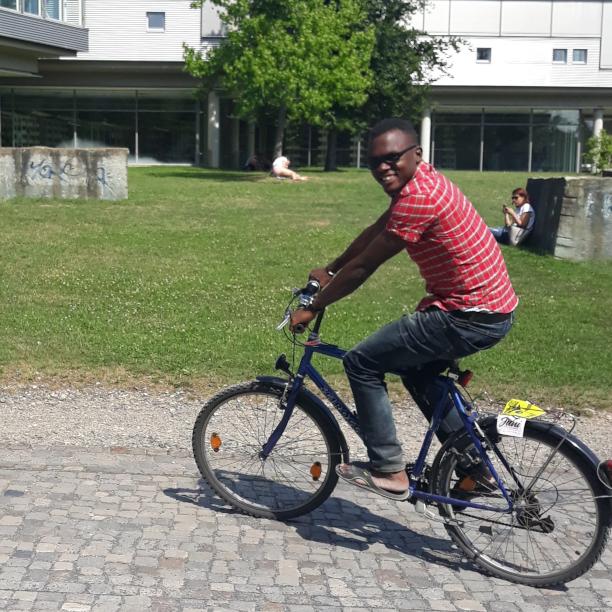
Ecstatically, the stranger I approached for directions was very kind. She immediately switched to English upon noticing that my German was not that polished. She offered to lead me to the city center despite the fact that it was neither her final destination nor a gateway to her preferred destination. This whole experience was quite humbling, and if there is one thing that I can say to an international researcher contemplating moving to Augsburg, I think it would be: just buy heavy clothes for winter, pack your suitcases and move here. Why? Because the university Welcome Service will surely have your back, and the generous Augsburgers will make you fall in love with this historical city.
The Isar River, Munich
Arriving in Bamberg
I went to Bamberg for the first time in early spring. I came for my interview for the position of an early-stage researcher in the GLOMO project. It was one of the best trips of my life. I got the job, and I fell immediately in love with the city of Bamberg, its nature, architecture, and ambience.
Bamberg is an old town—awarded with the UNESCO World Heritage title in 1993. It is famous for its spectacular old Town Hall which is standing in the middle of the Regnitz River. For me, this building represents the particular atmosphere in Bamberg—celebrating culture while at the same time being embraced by nature.
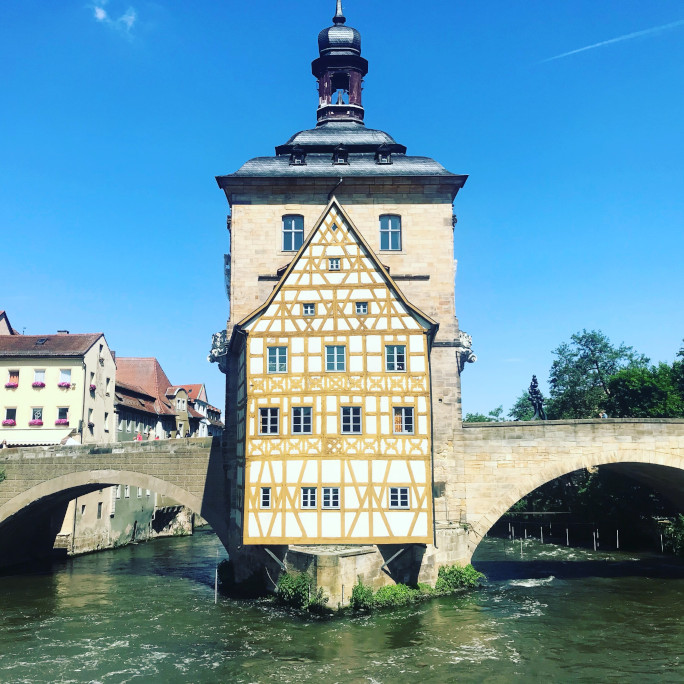
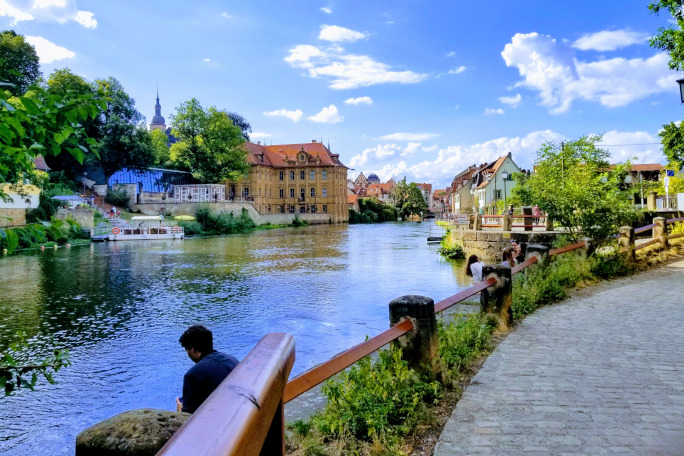
My first excursion was a walk along the Regnitz River. It was so calm, refreshing, and relaxing that it quickly became my most favorite walk until now.
The GLOMO project requires the regular mobility of early stage researchers, so we had colleagues visiting us during the pandemic. They were impressed how safe Bamberg is, and that we were able to enjoy going for a walk into the forest in spite of the presence of COVID-19.
The Researcher Mom
Today it has been three years since I started working in academia. At the beginning, the thought of balancing family life with a research career seemed like a mammoth task. My daughter was only one year and eight months old at that time. With my family living in Pakistan, I could not count on the usual support from my family. Furthermore, it was difficult to delegate the fundamental job of being a mother.
However, the support and understanding of my colleagues have made all the difference. I have also been very fortunate with the family friendly facilities offered by the university. Thanks to the help of FAU’s family service I got a place in a nearby day-nursery (Kinderkrippe) very quickly.
During summer, when all kindergartens are closed, the family service organizes a special service to provide an alternative option for researchers. And when you’re on a conference, they help you find a babysitter to take care of your child.
Last year my daughter got sick and I had to stay in hospital with her for two weeks. My professor and the secretary of our department took the time to explain which support is usually provided by FAU and the German healthcare system in this situation, like working from home and paid sick leaves. The back-up of my research group is a great experience. Thanks to the comprehensive support at university, I am able to combine my family life and academic career.
Hey Ivan, Your Socks Are the Same!
I enjoy the city of Regensburg a lot. Especially since our little daughter started to discover playgrounds and parks. There are so many! And so clean! Wherever you go, you can rest assured, public spaces are very clean. It feels so safe to let our little darling play. People here care a lot about the public space —and spend a lot of time there doing a plethora of interesting activities. Amazing! I’ve been wondering, what could be the origin of this cleanliness and order and perhaps the secret lies in following the rules.

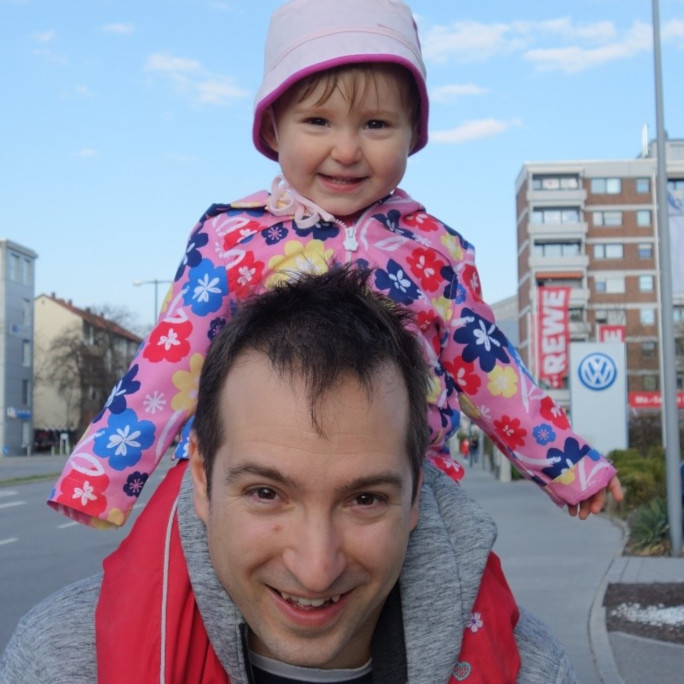
Ever since I came to Germany, I saw that German people are people of rules. There are rules on everything and people seem to enjoy following them. From my point of view, it is an admirable trait. But sometimes it can lead to funny situations, just like this one with my socks.
In the first week I came to the university, my colleagues were telling me „Hey Ivan, you’ve got two different socks on!“ I explained to them that I was doing it on purpose and that I like to choose the same kind of socks, but in different colors. It makes life less serious. Over time, people got somehow used to that and understood my rules for sock selection. One day I was waking up early in the dark and I took two identical socks by accident. That day, three people stopped me and pointed out that my socks were the same! Isn’t it hilarious how people immediately spotted that I broke my own rule and warned me?!
Setting Up My SciComm Scene
I love science communication (SciComm) and have been doing it consistently for the last three years. In Freising, there are monthly SciComm events organized by the Technical University of Munich, but they are in German. For people like me, who are not fluent in German yet, these events are not accessible. So it was clear what I had to do: create my own SciComm event in Freising!
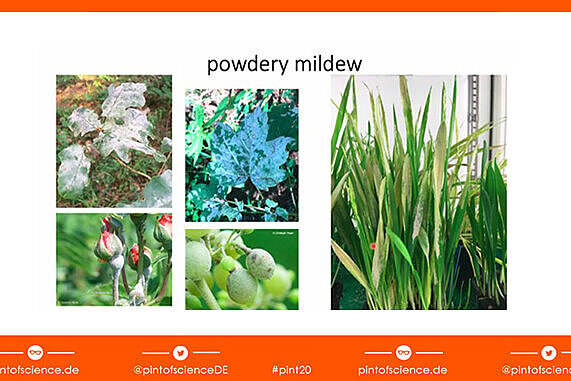
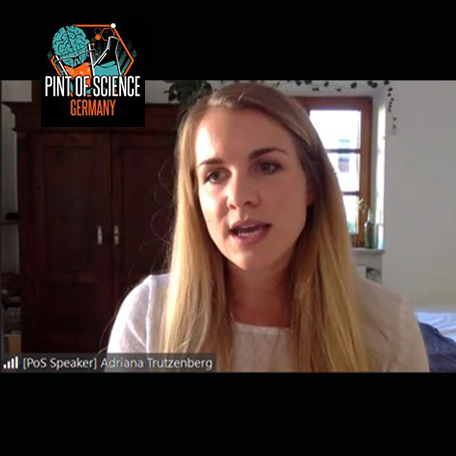
I was familiar with the format of Pint of Science, a world-wide SciComm organization that aims at bringing scientists to common places such as pubs to talk about their research in an everyday language. The Pint of Science Central Team was very receptive to my idea. Like many events in 2020, Pint of Science had to be moved to an online format because of the pandemic. Our small team in Freising could bring six enthusiastic PhD students candidates from the fields of Astronomy, Phytopathology and Ecology to the event. The talks were great and well attended. The discussions afterwards were very interesting, and the audience participated actively. Organizing the event was a great opportunity for me meet new people and make new friends. Our next event will be a get-together to finally meet each other in person. I am looking forward to Pint of Science 2021!
Discovering Bird Photography
Since my childhood, I have loved birds. Soon after I have arrived in Bamberg to do my PhD, I realized the diversity of bird species in the city. Two of my favorite places in Bamberg to watch and enjoy the different birds are the lakes in Hainpark, and in the park of Schloss Seehof. The diversity of the birds in Bamberg pushed me to learn what became my favorite hobby: bird photography.
The Rules You Follow (And the Ones You Don't!)
The light shines red. A red so bright you can almost hear it because there is neither a car nor bicycle in sight. A small crowd waits for red to turn green.
I’m not in that crowd. I’ve already crossed the street. It is my inheritance from growing up in one of North America’s largest cities and a culture that is consistently five minutes late. An inheritance that eight years of living in Bavaria cannot break.
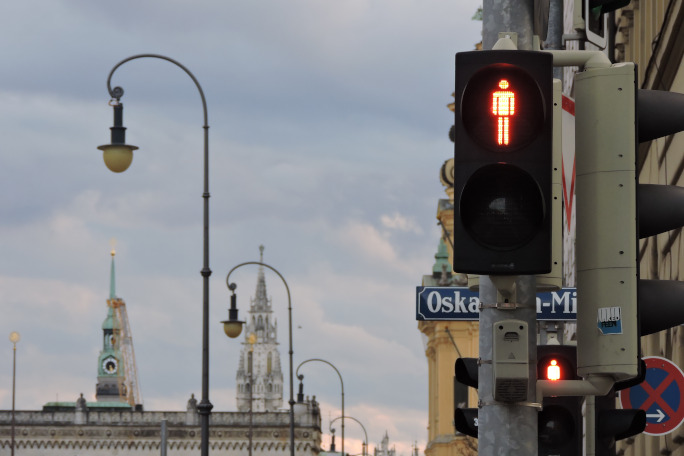
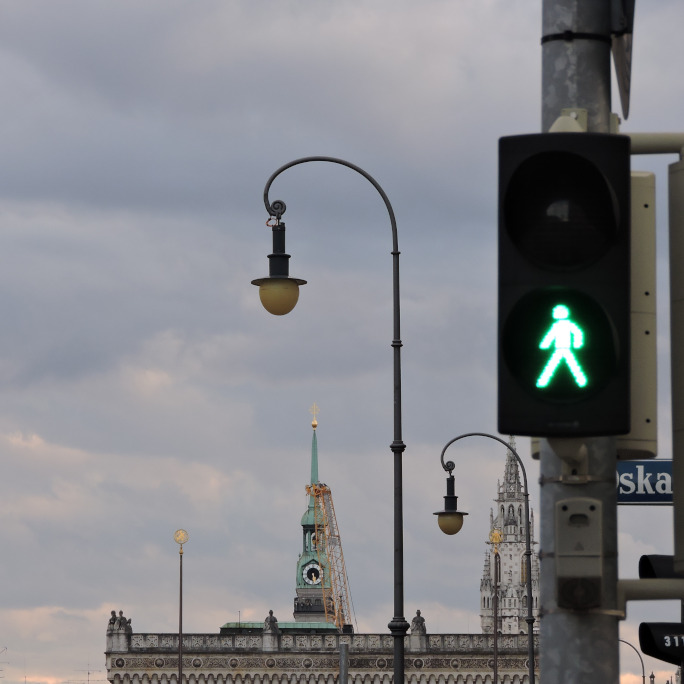
In Munich, jaywalking—the art of crossing the street when the red light tells you not to—is relatively uncommon. Not impossible, but rare. Even late at night, when it is easier to find a bar than it is a driver, some pedestrians still stand at empty intersections waiting for green.
The origins of the term “jaywalking” trace back to early twentieth-century Kansas. What began as a jay-driver, a description of unruly automobiles and horse-drawn carriages barreling down the wrong side of the road, became shorthand for those with poor “sidewalk etiquette.” Now jaywalker includes both cautious street-crossers and rebels who wish to play cat and mouse with cars.
Despite considering myself of the cautious variety, it was only in Munich that I realized I am a jaywalker at all. In cities where jaywalking is the norm it goes unnoticed. Here, it sticks out. And so although I risk a fine, or worse yet, stink-eye from the patient pedestrians waiting for green, I can’t help but walk ahead. A reminder that learning the rules is one thing, and learning to follow them another.



